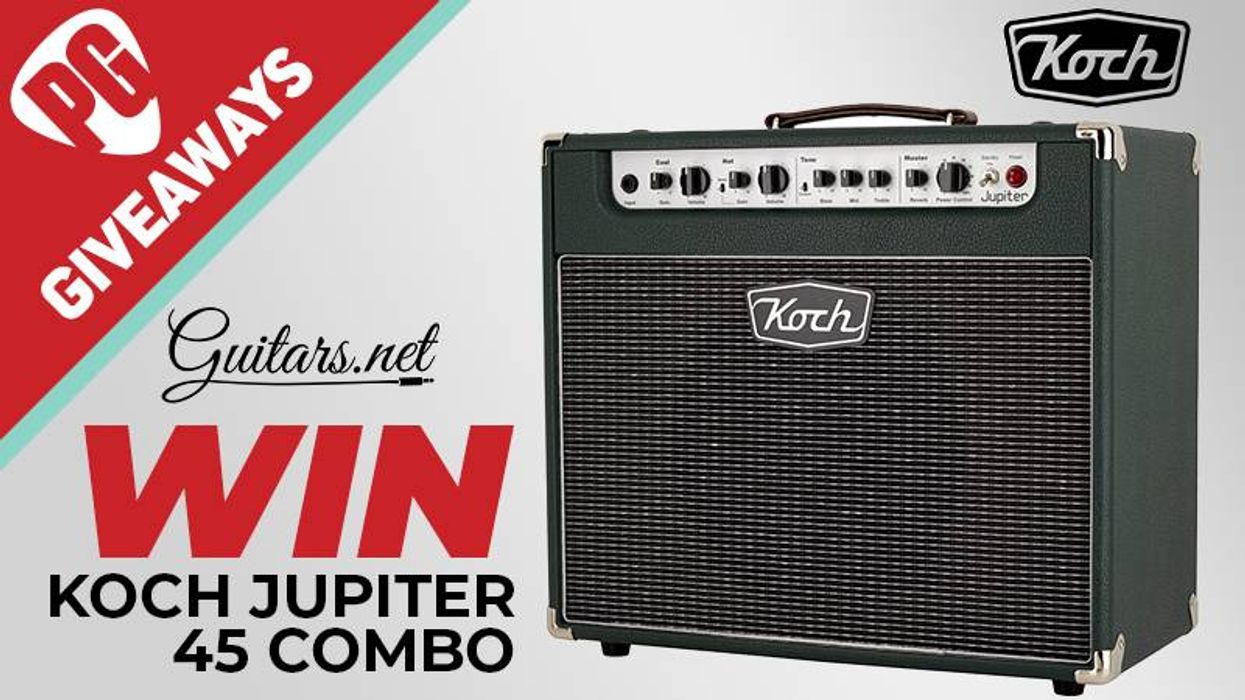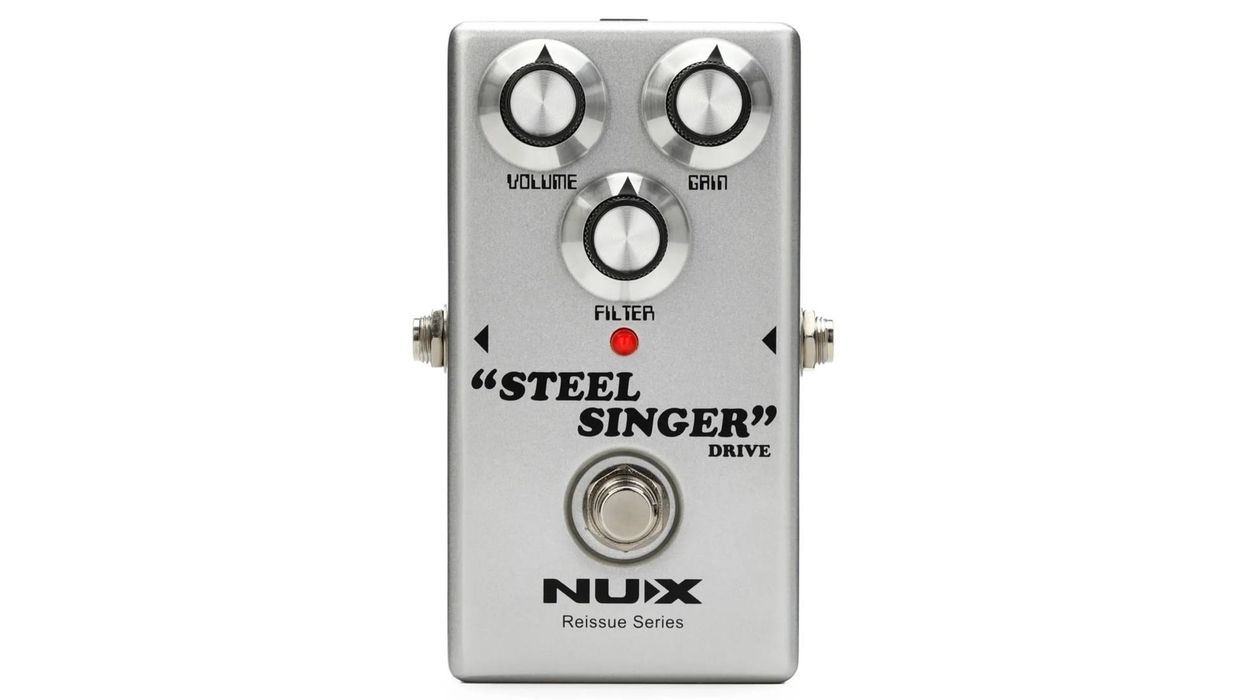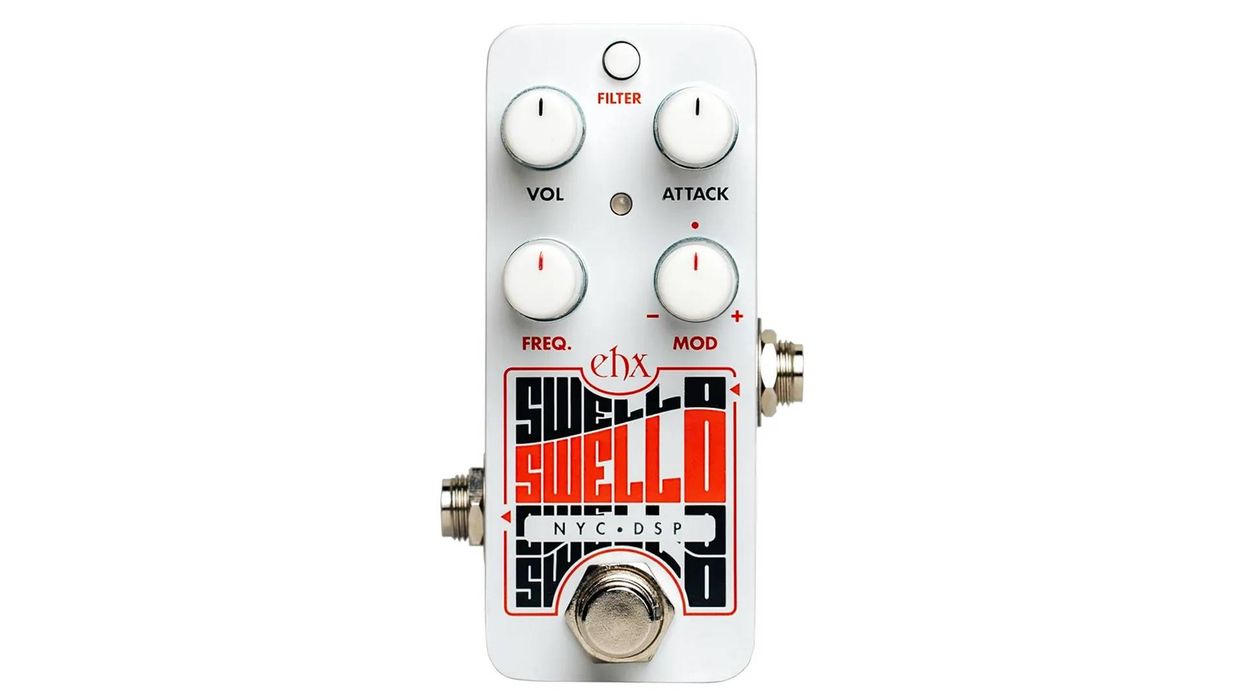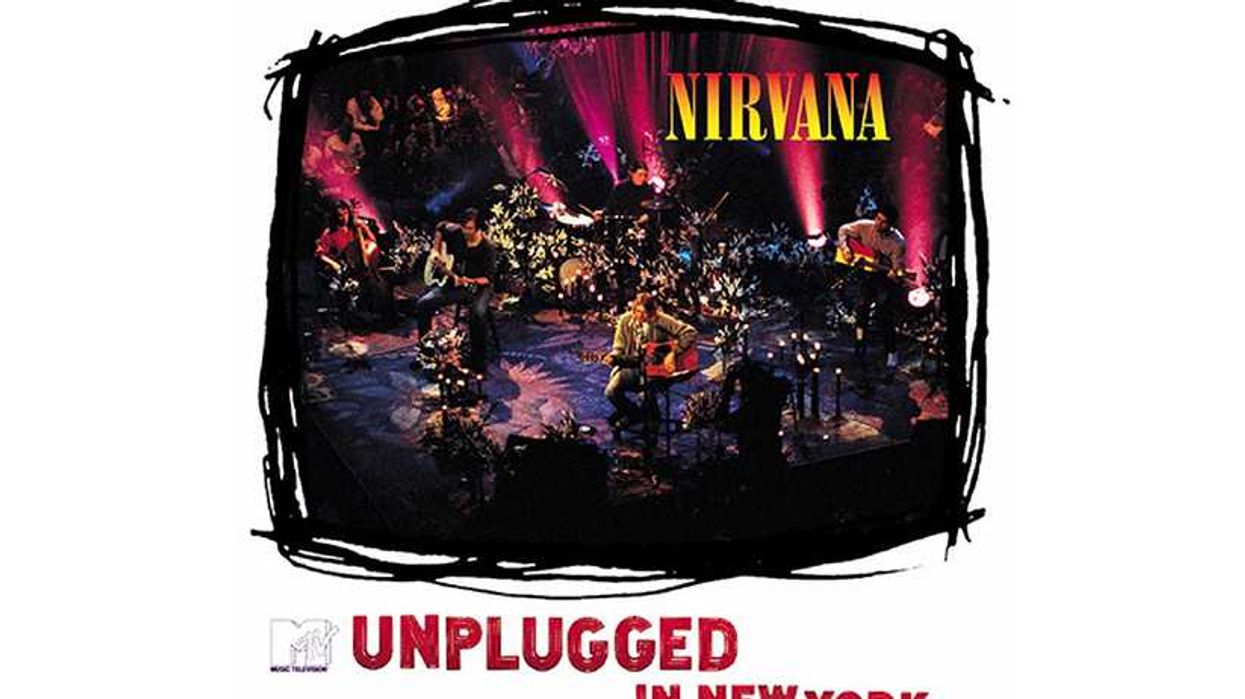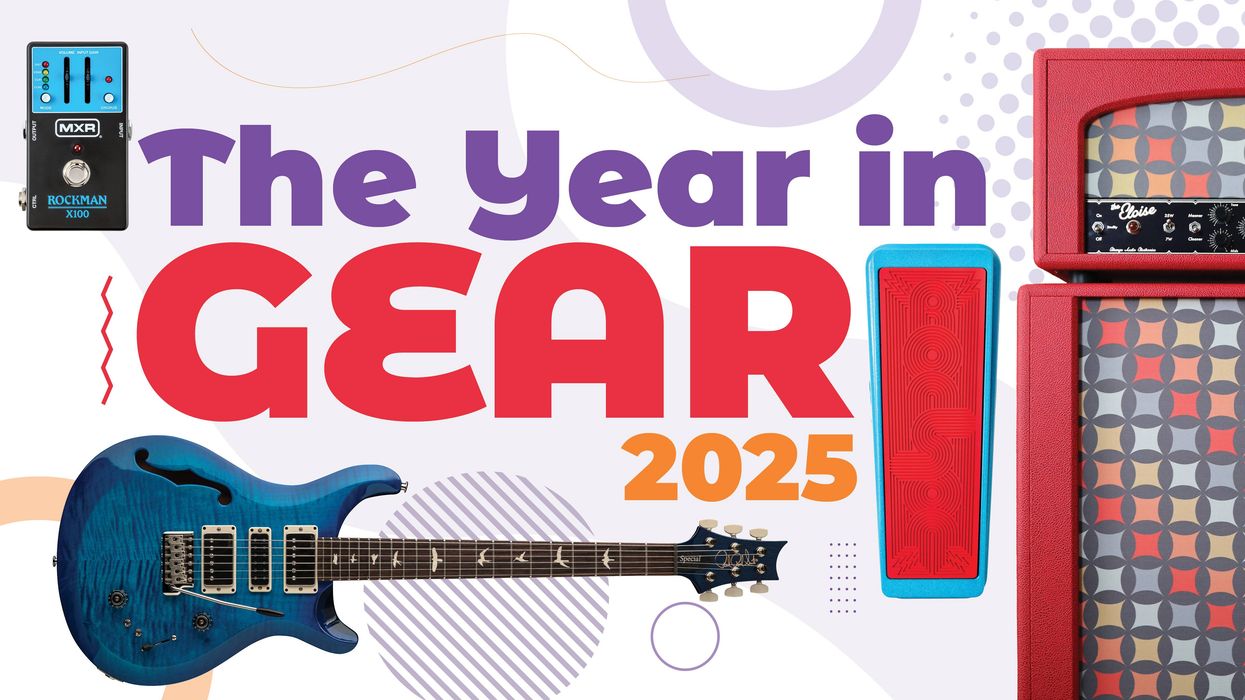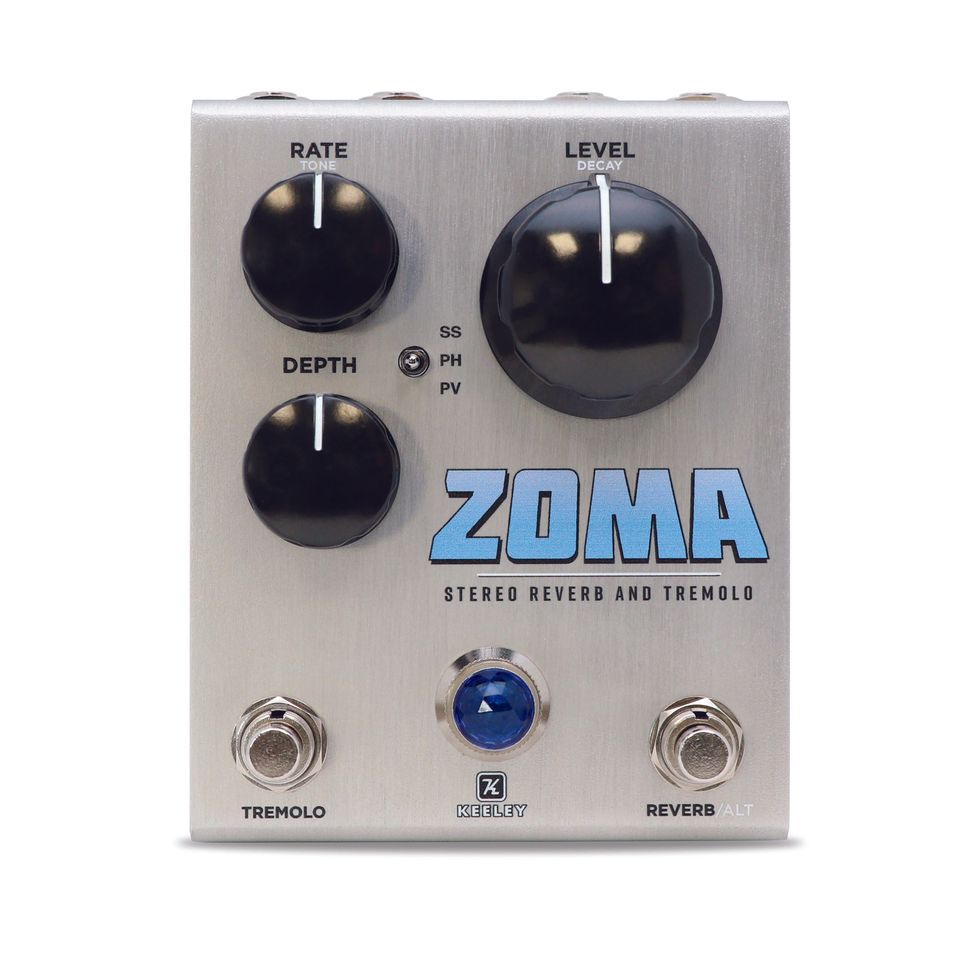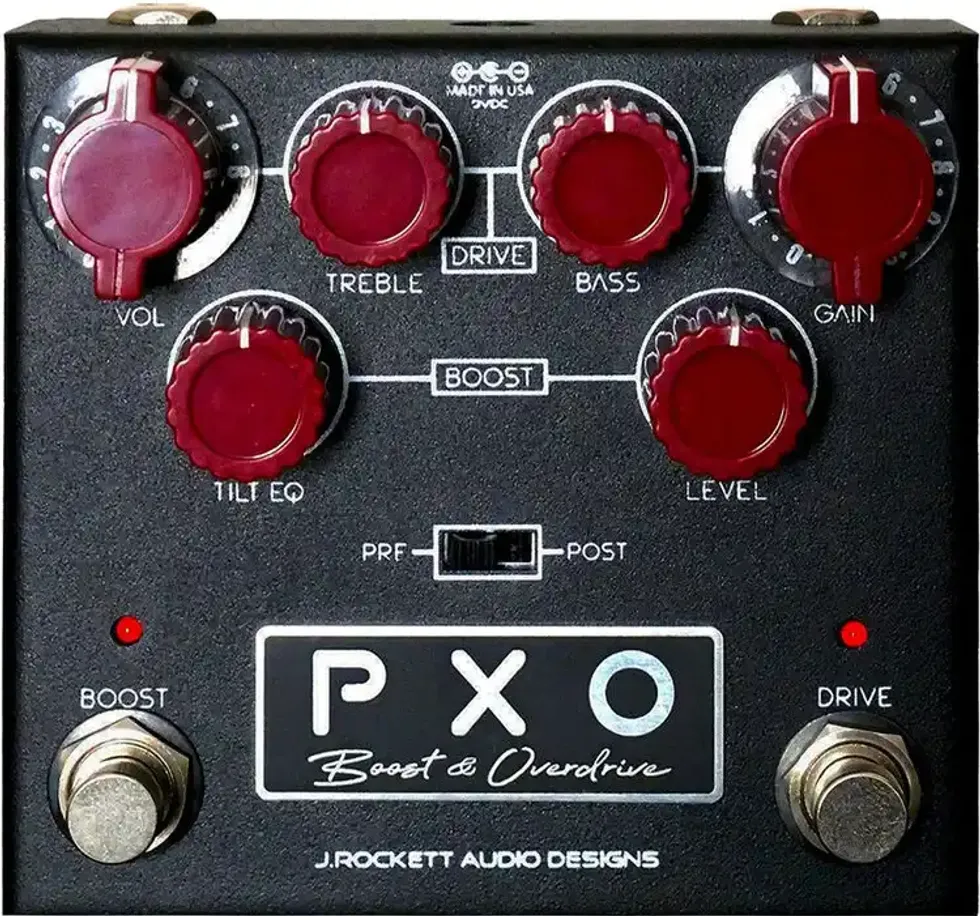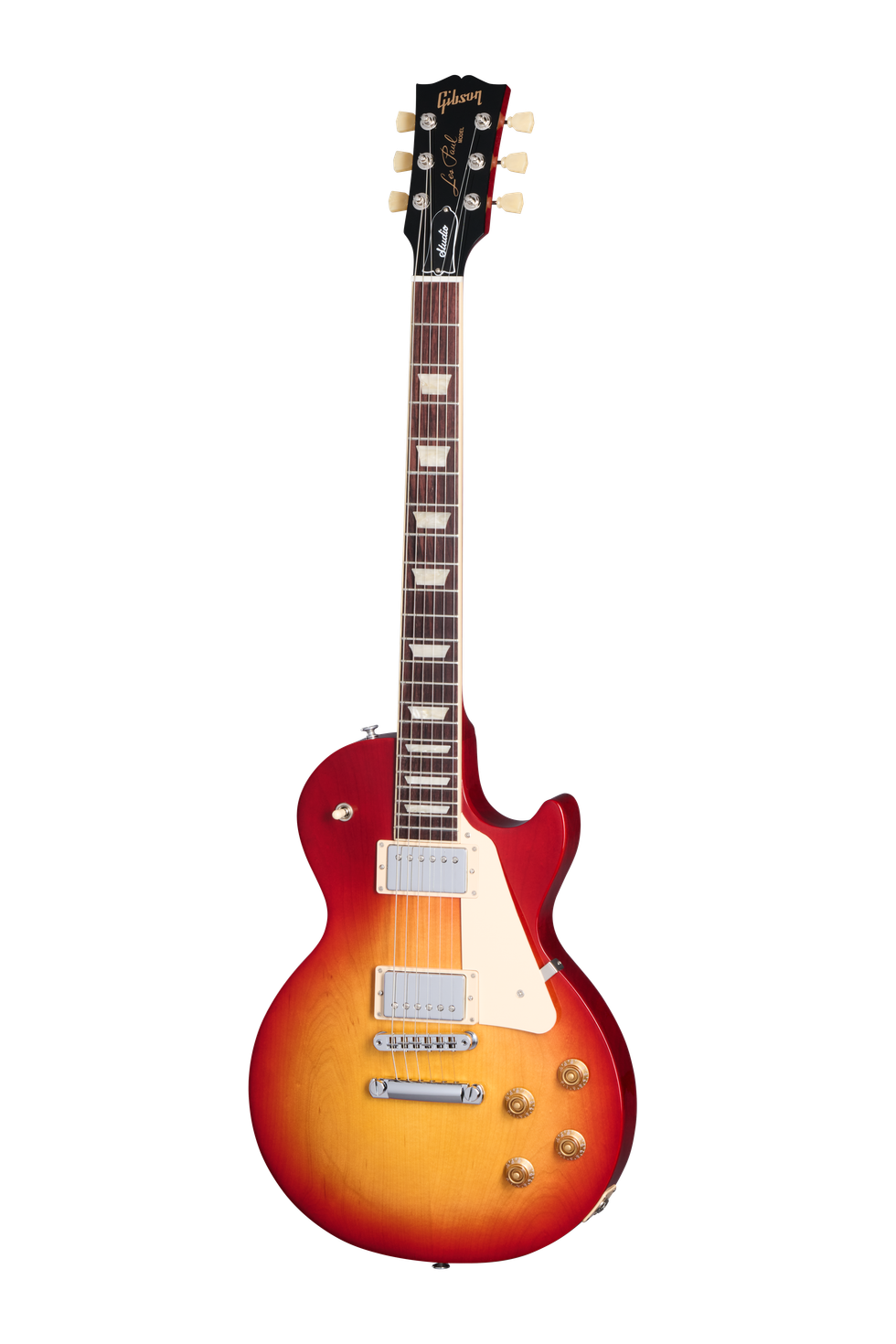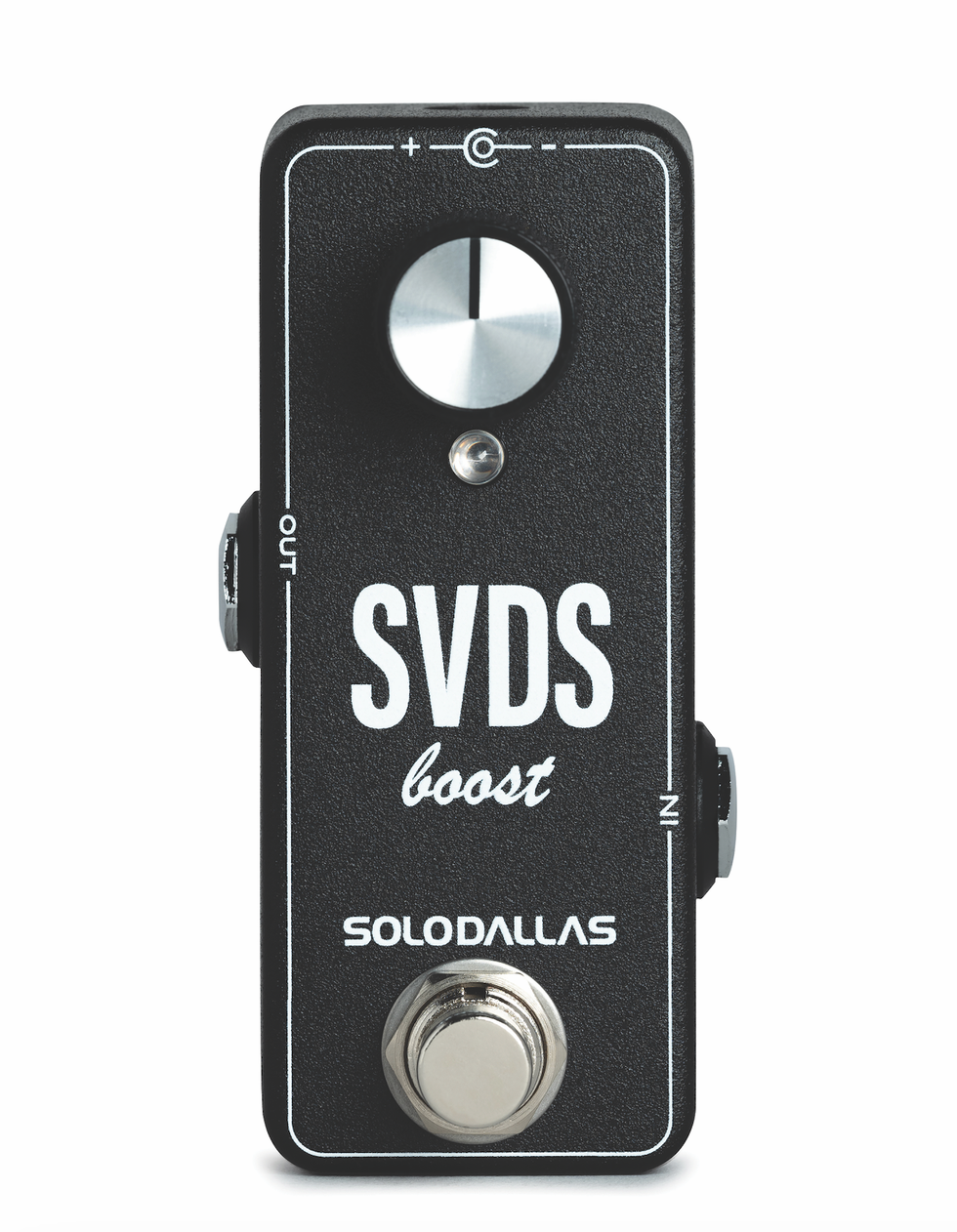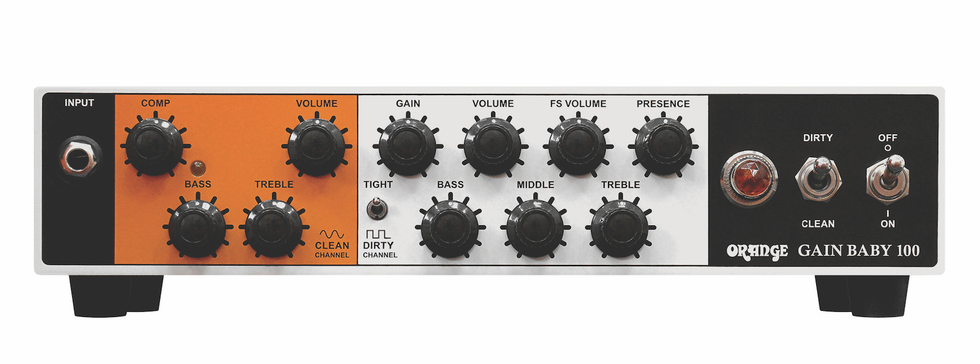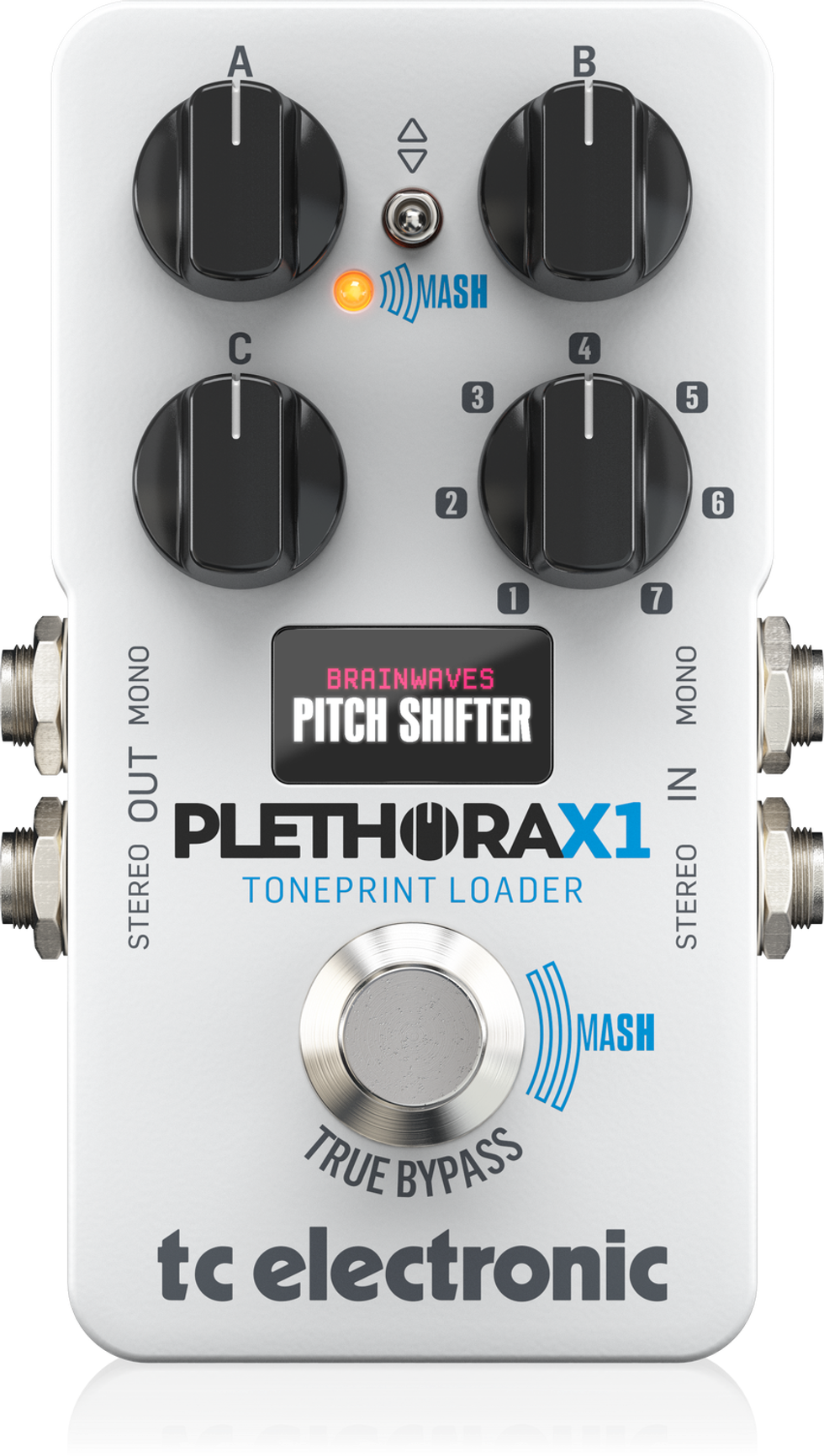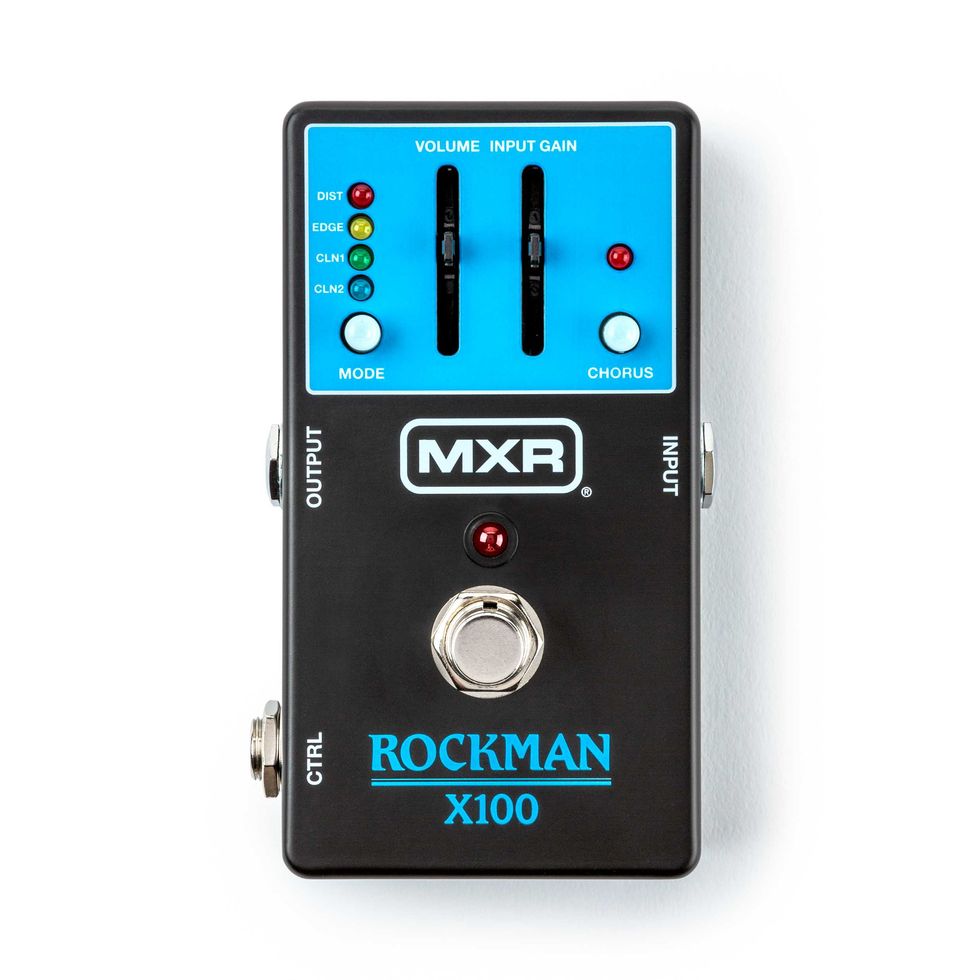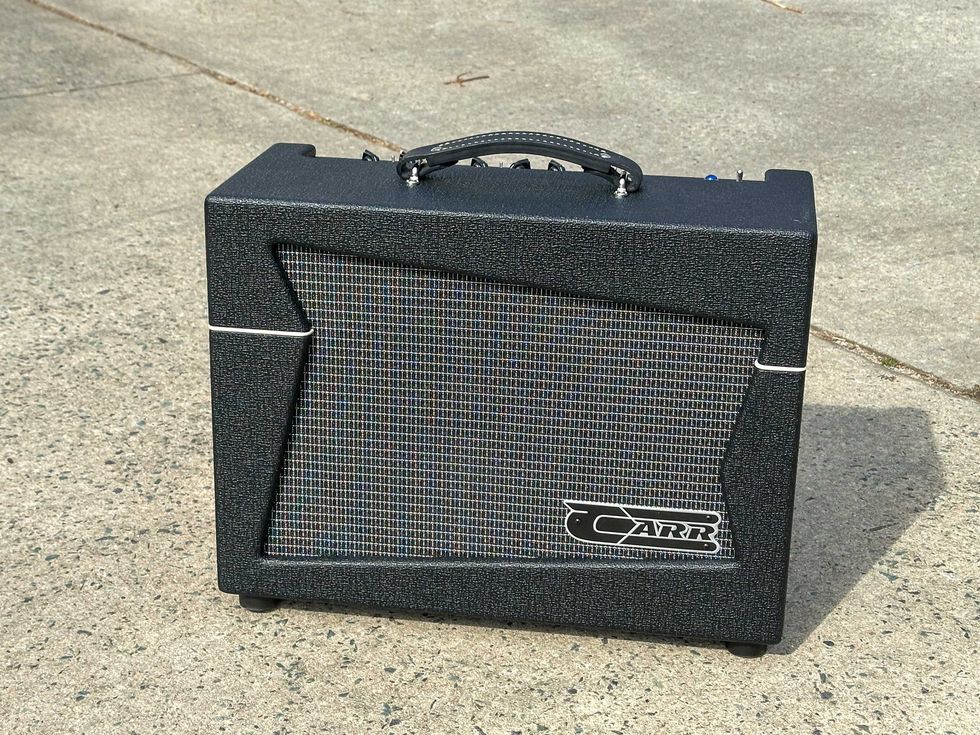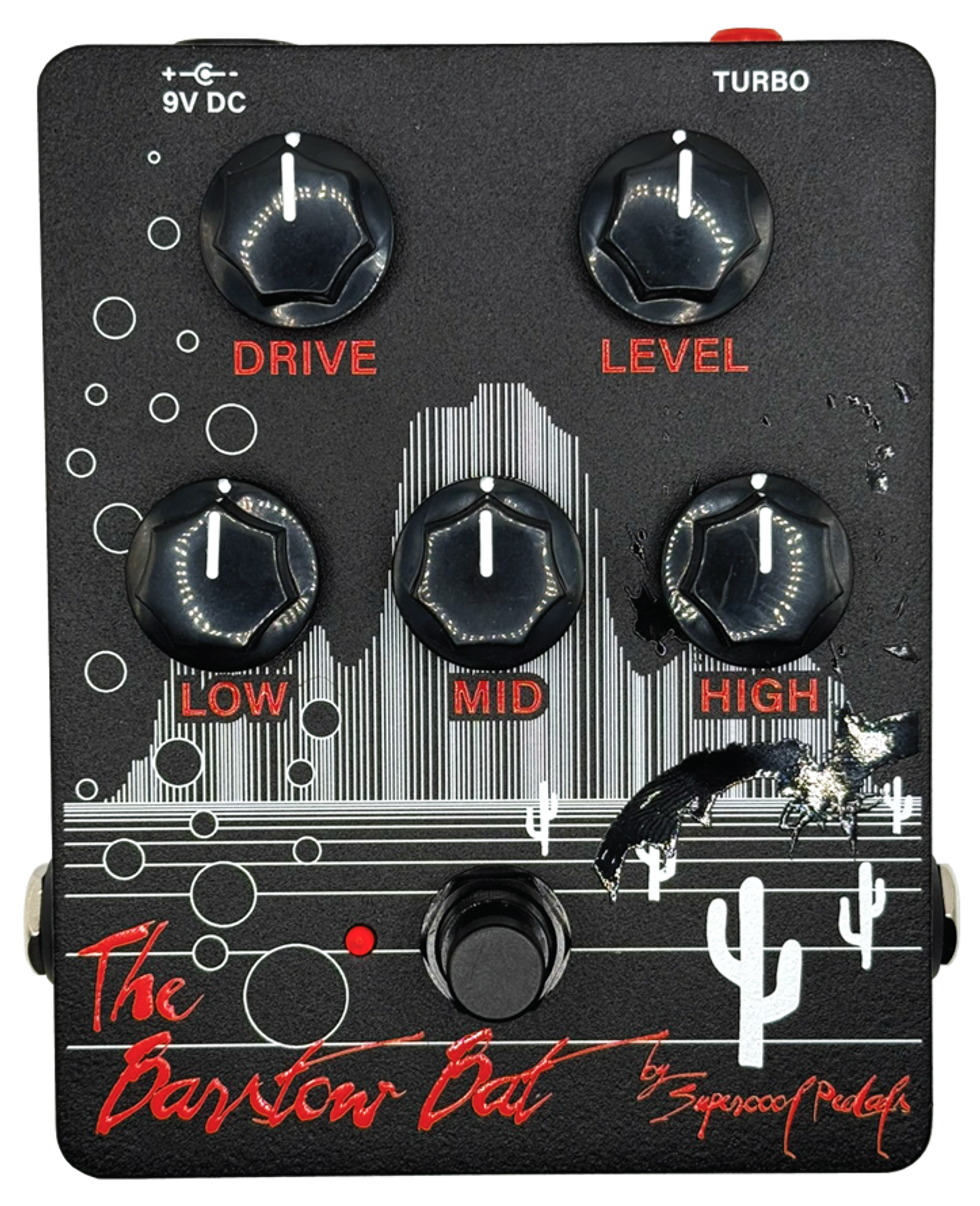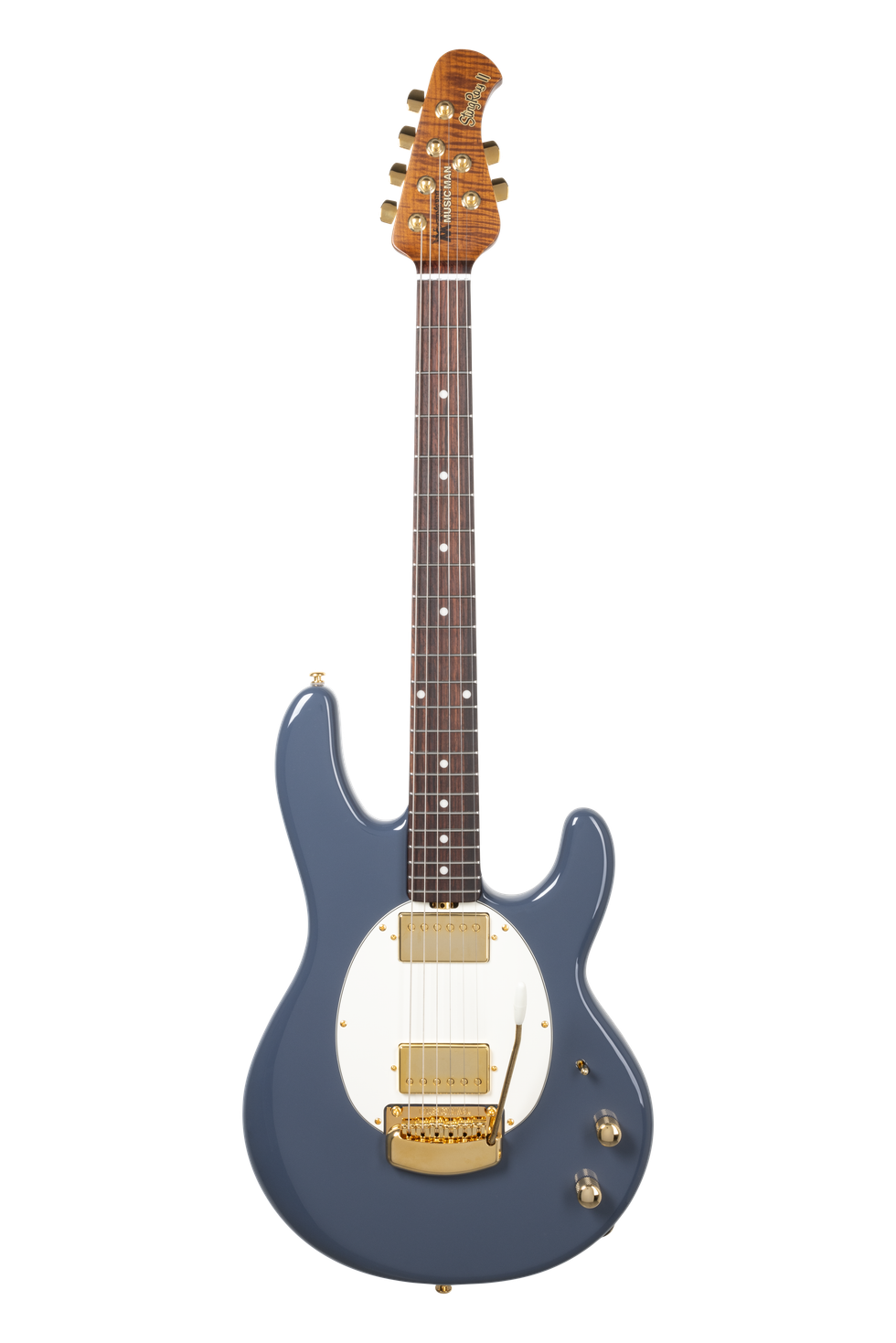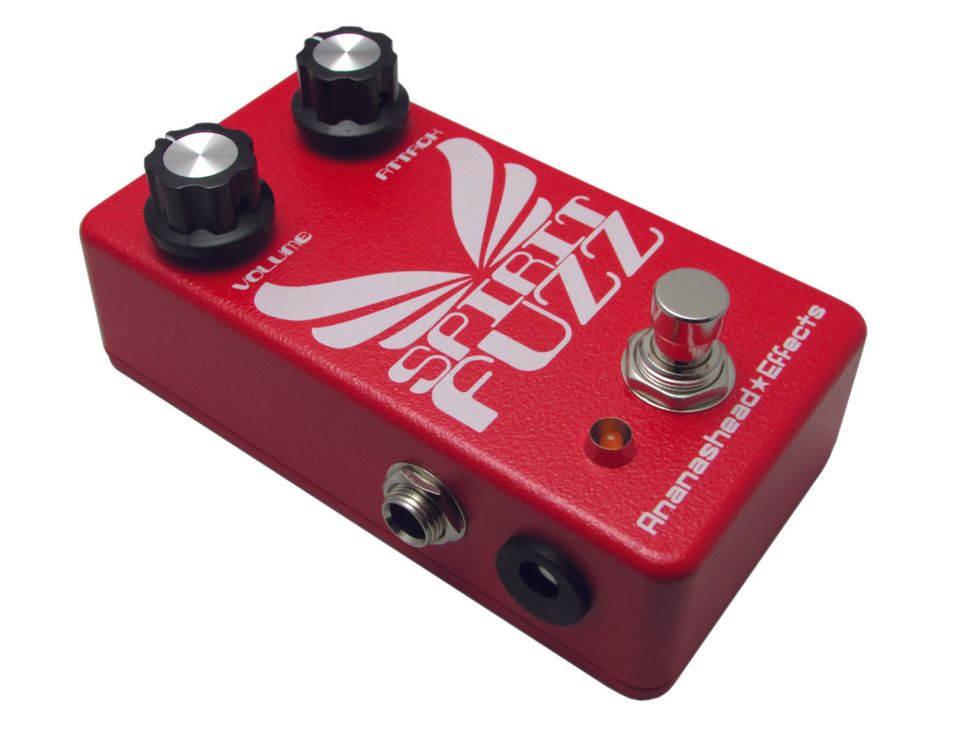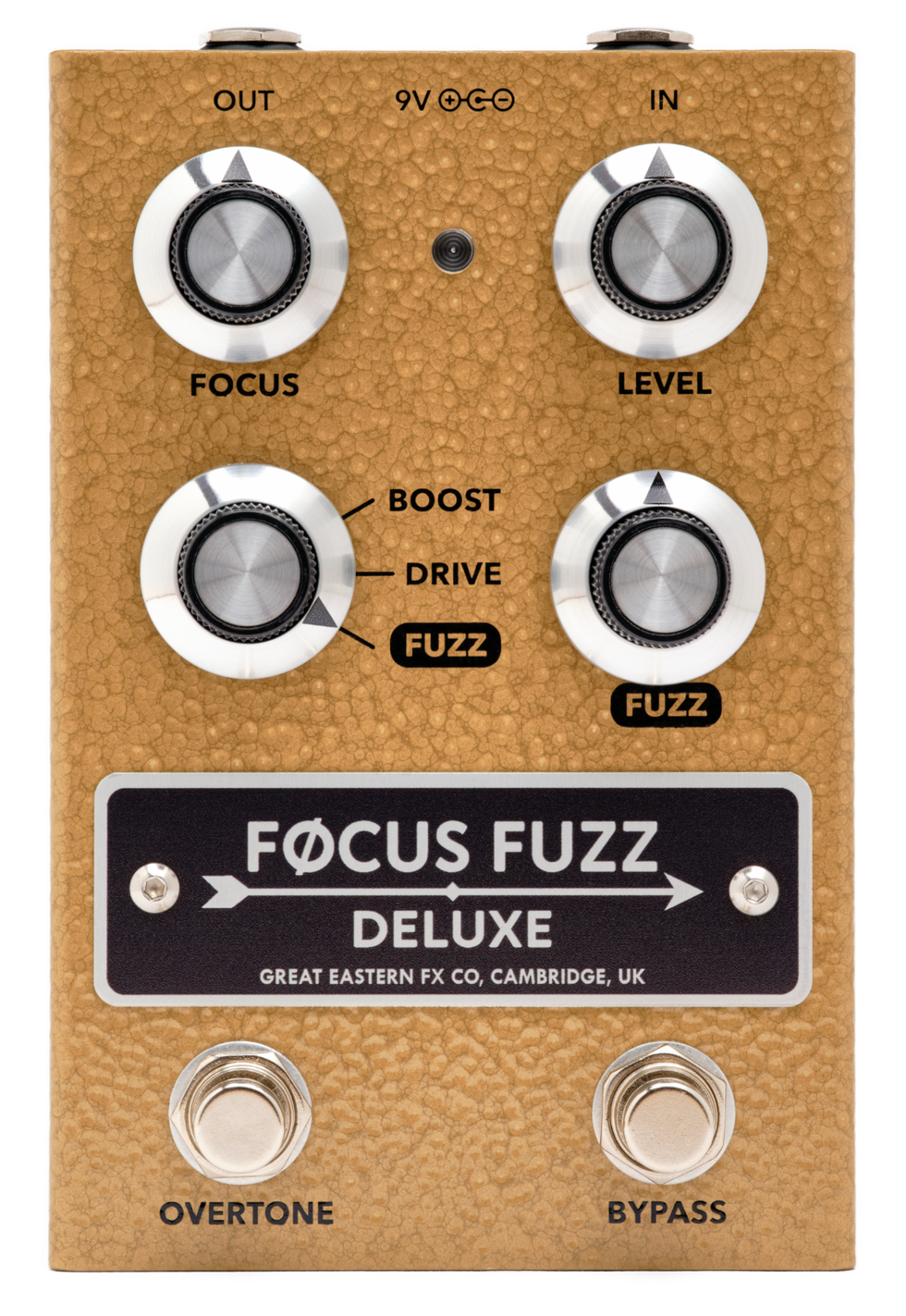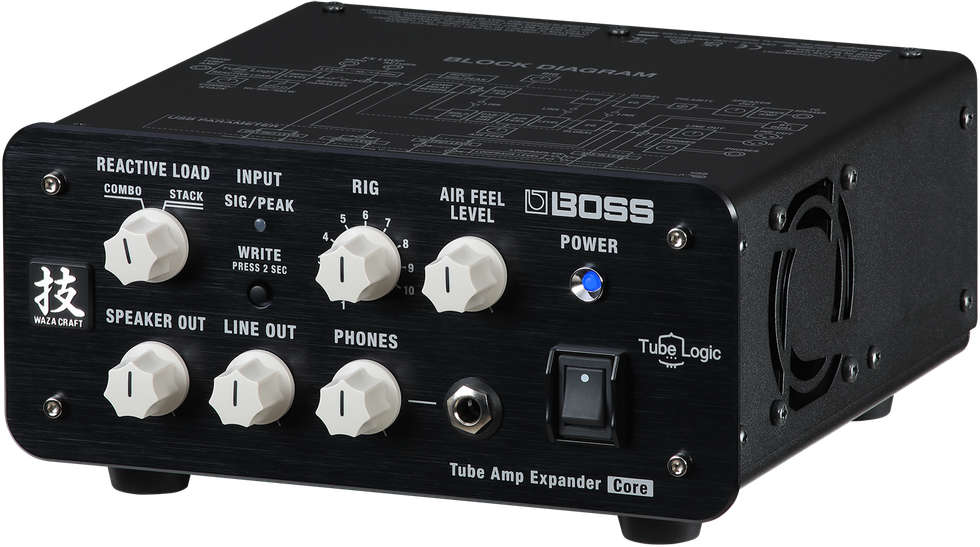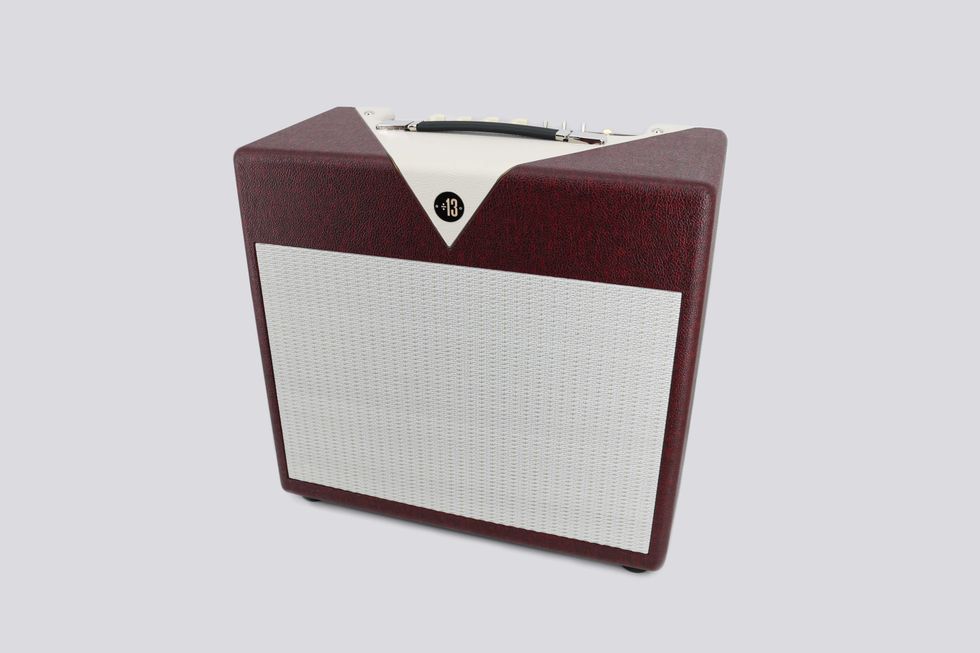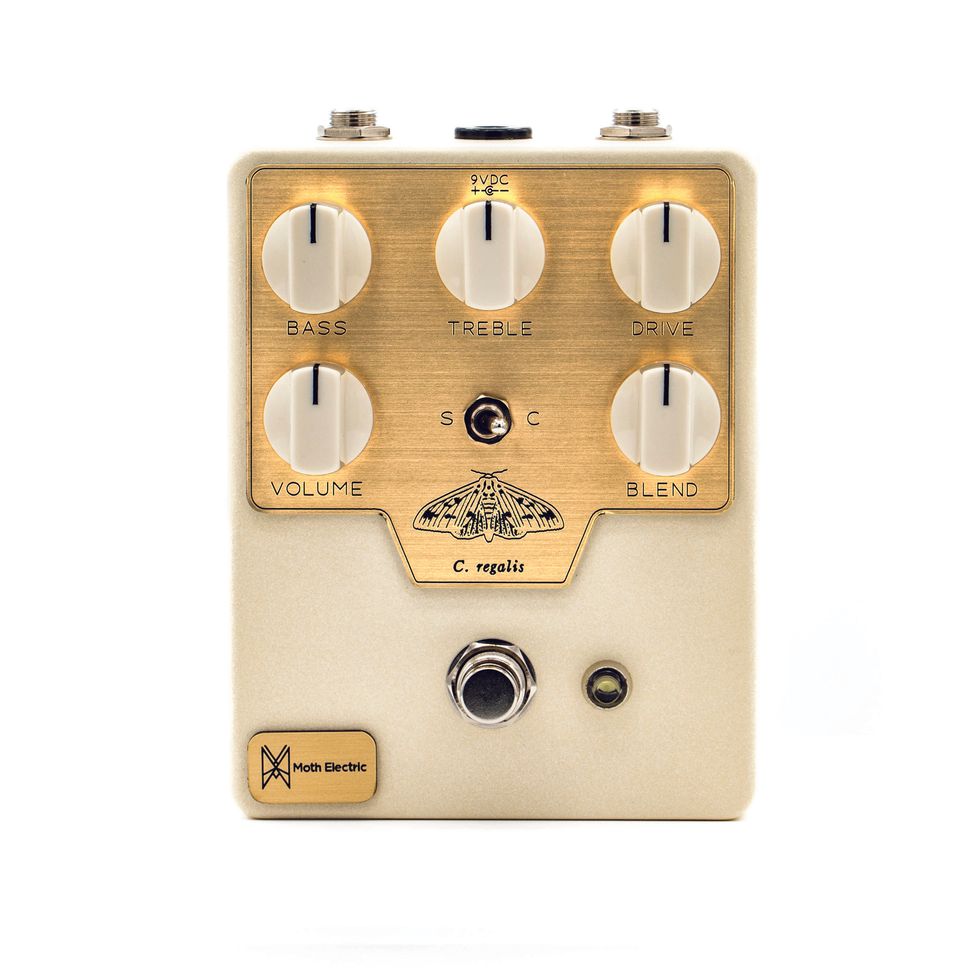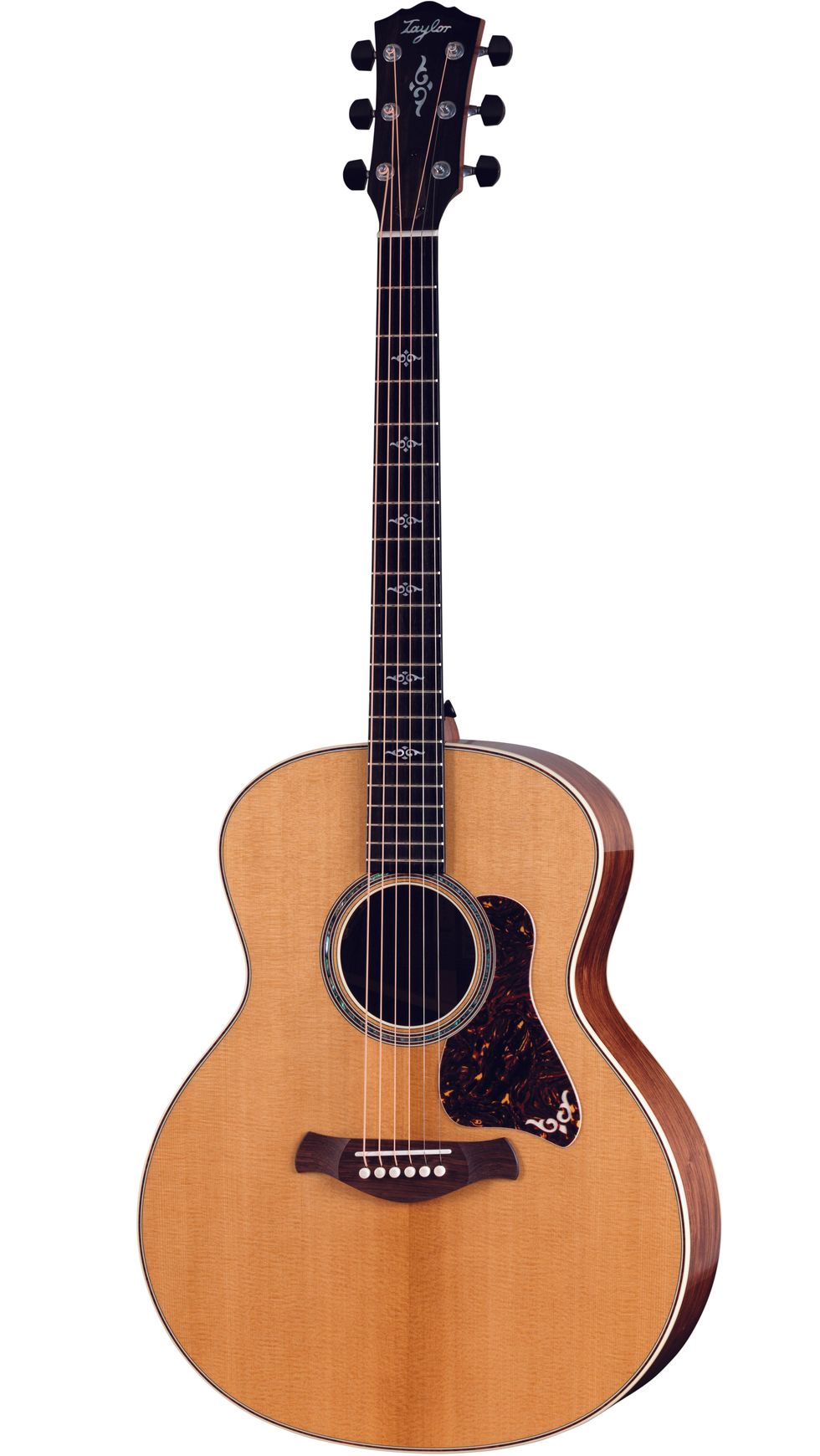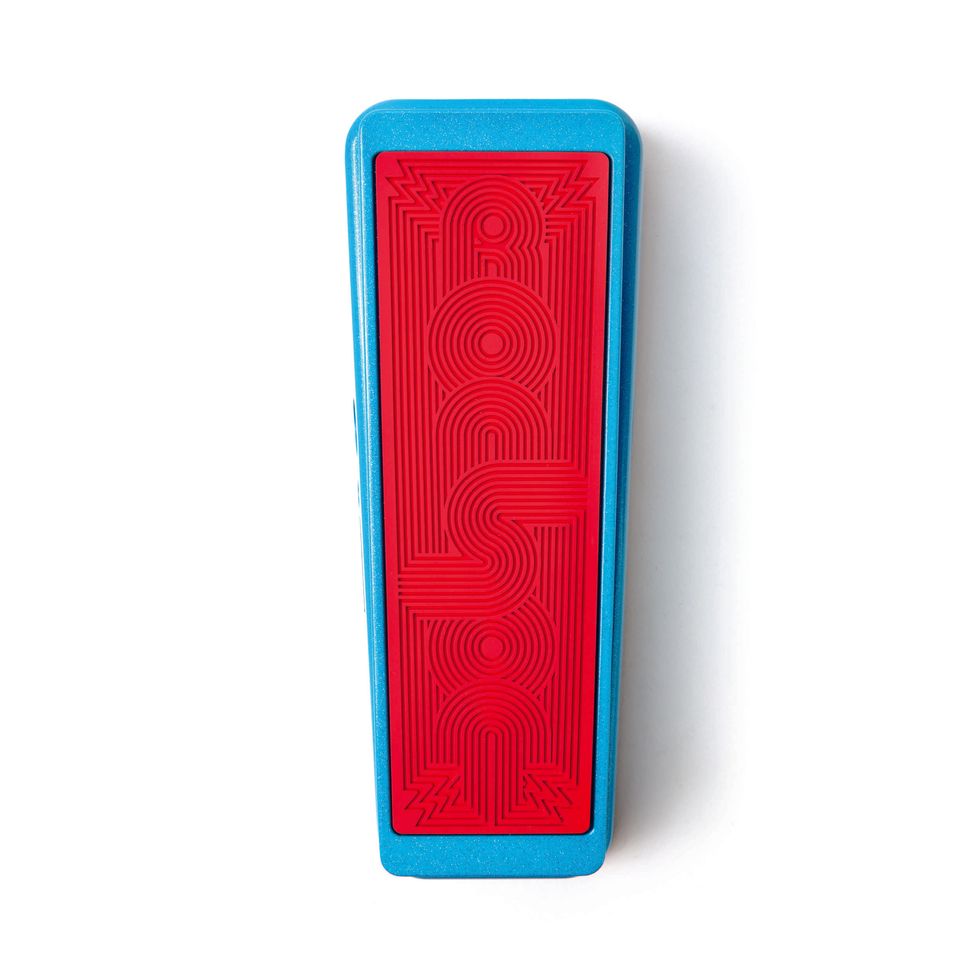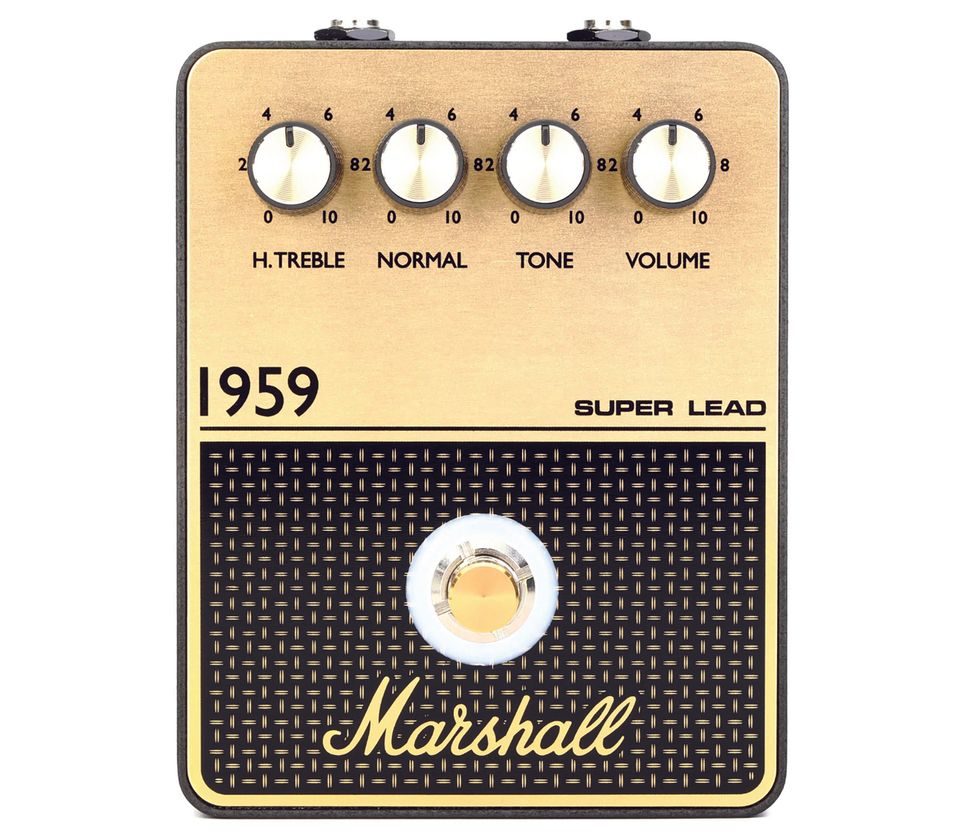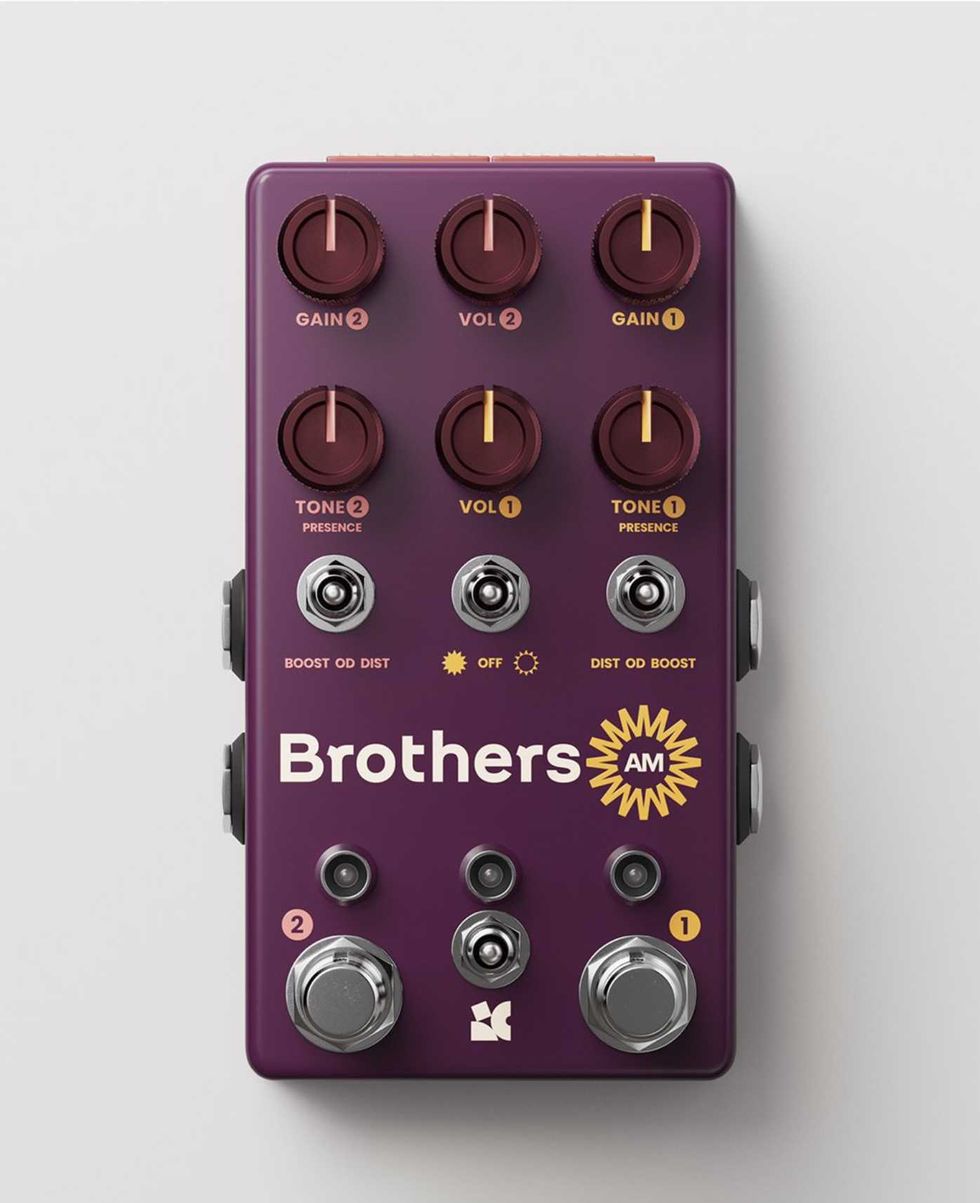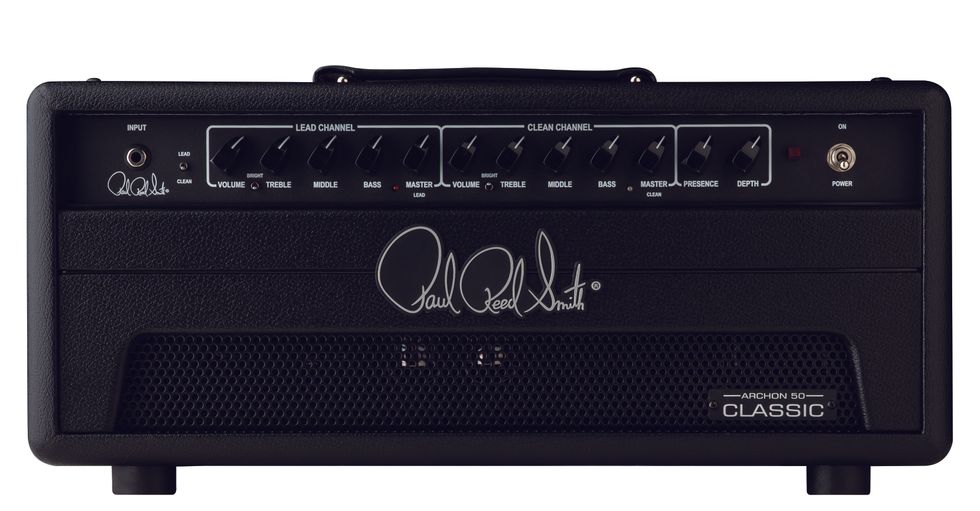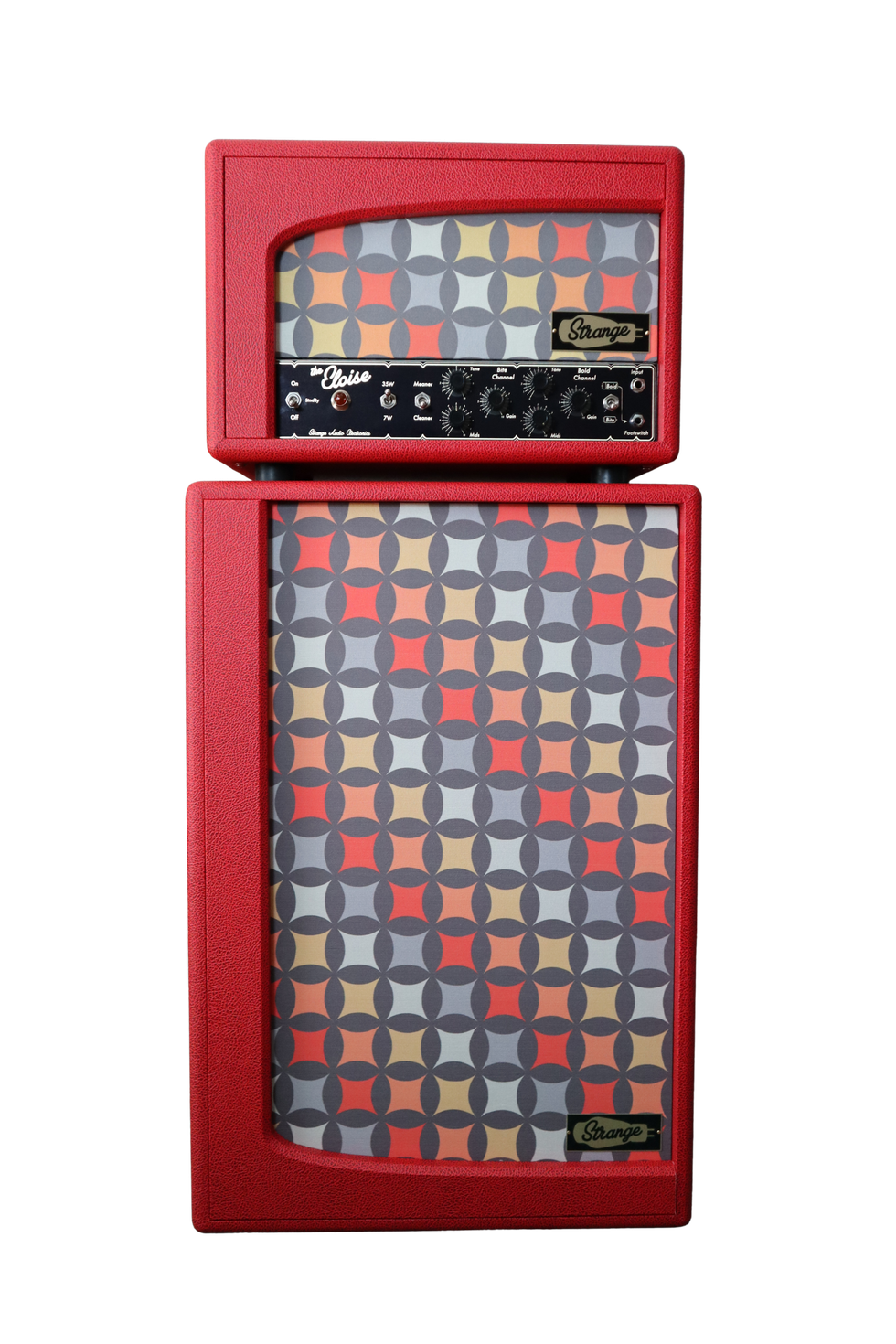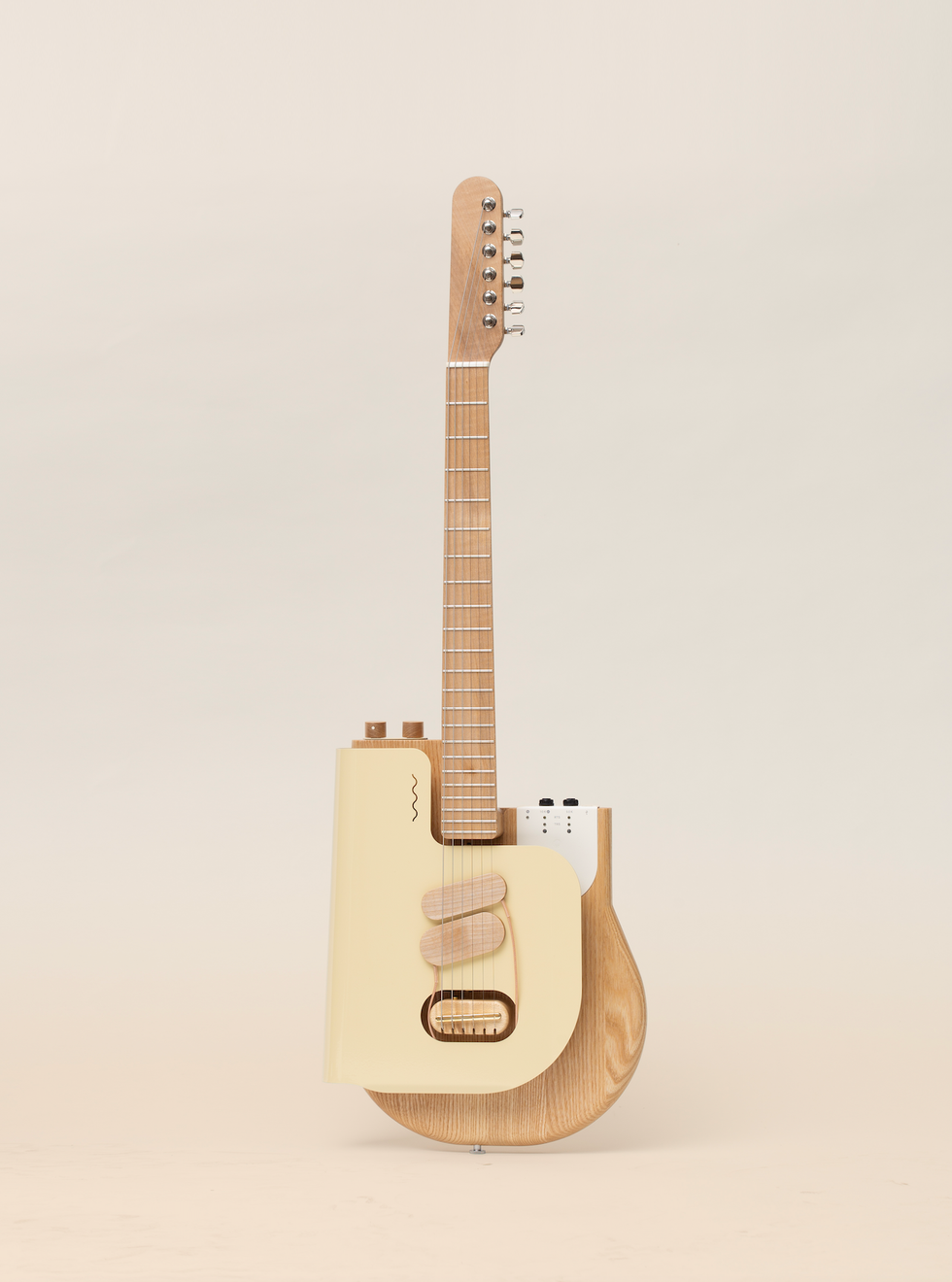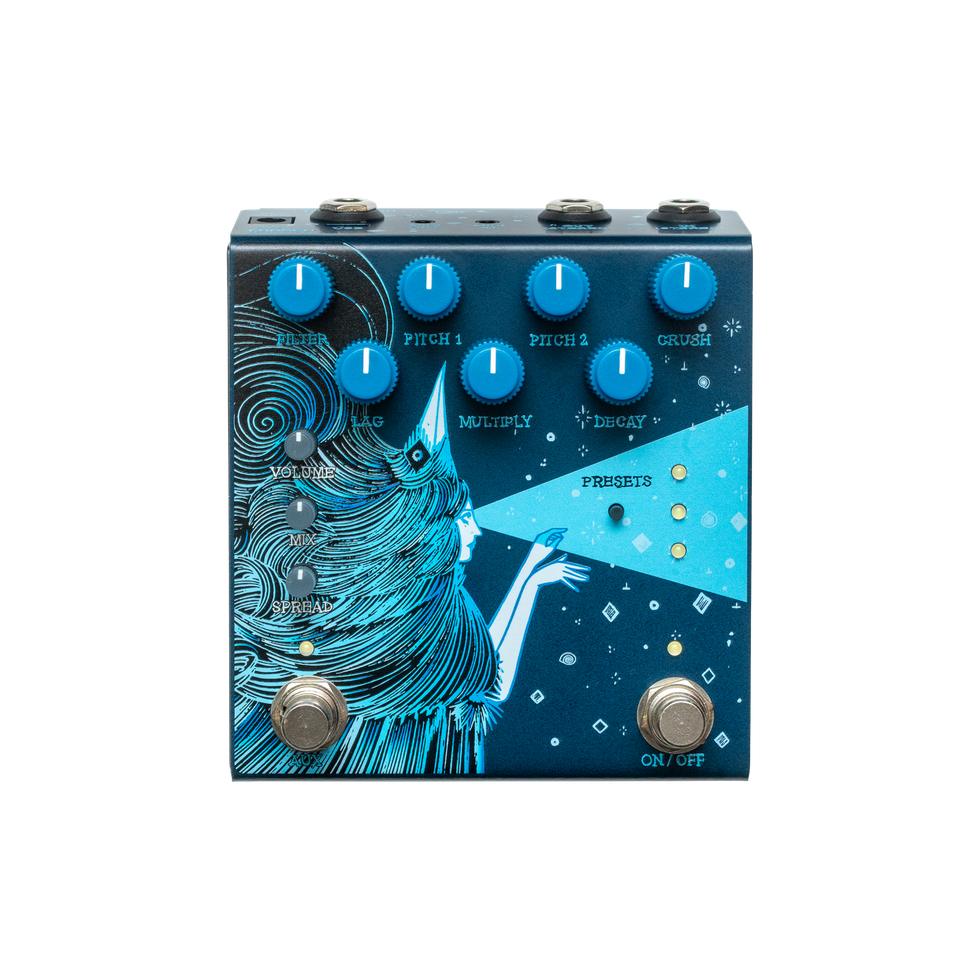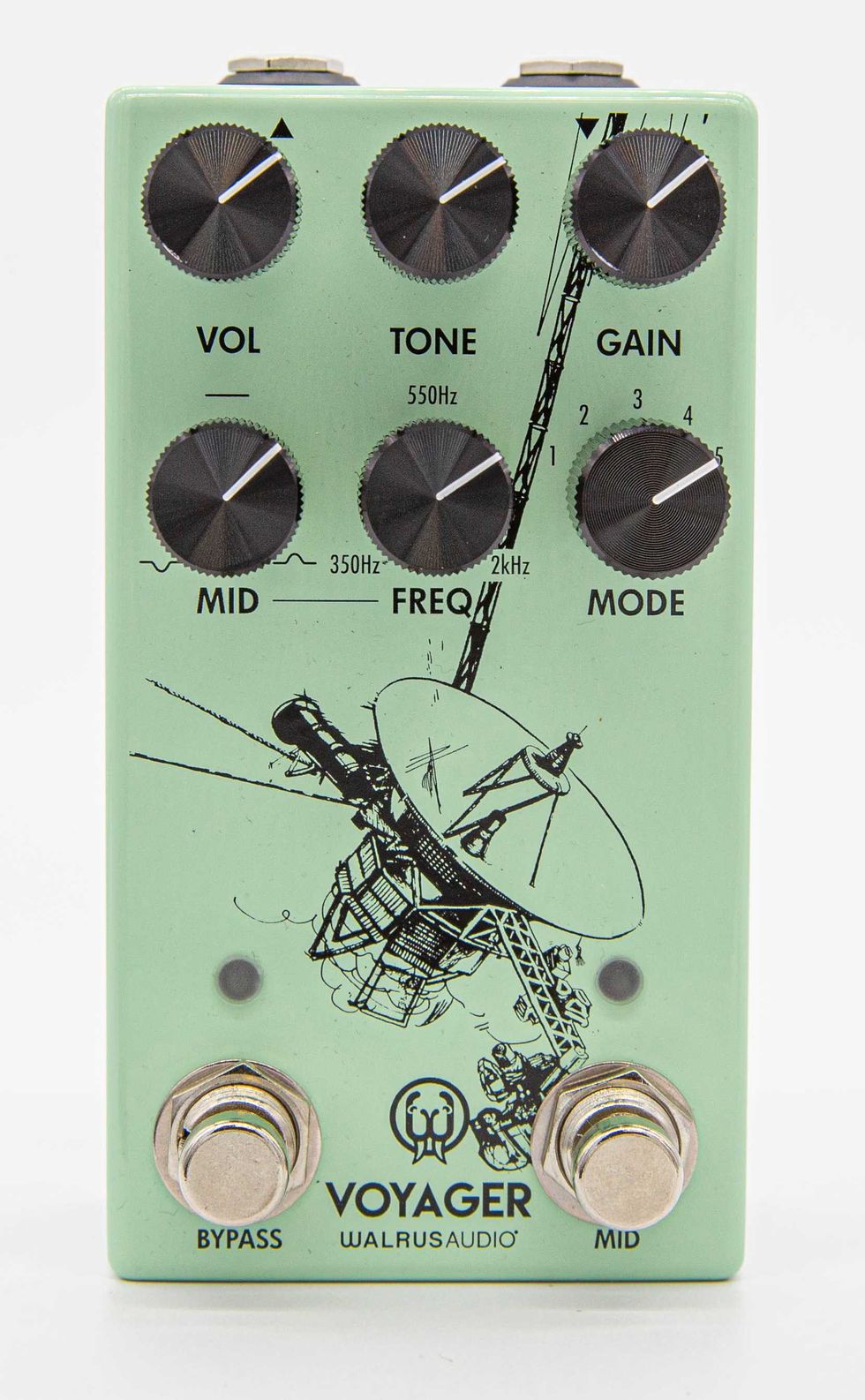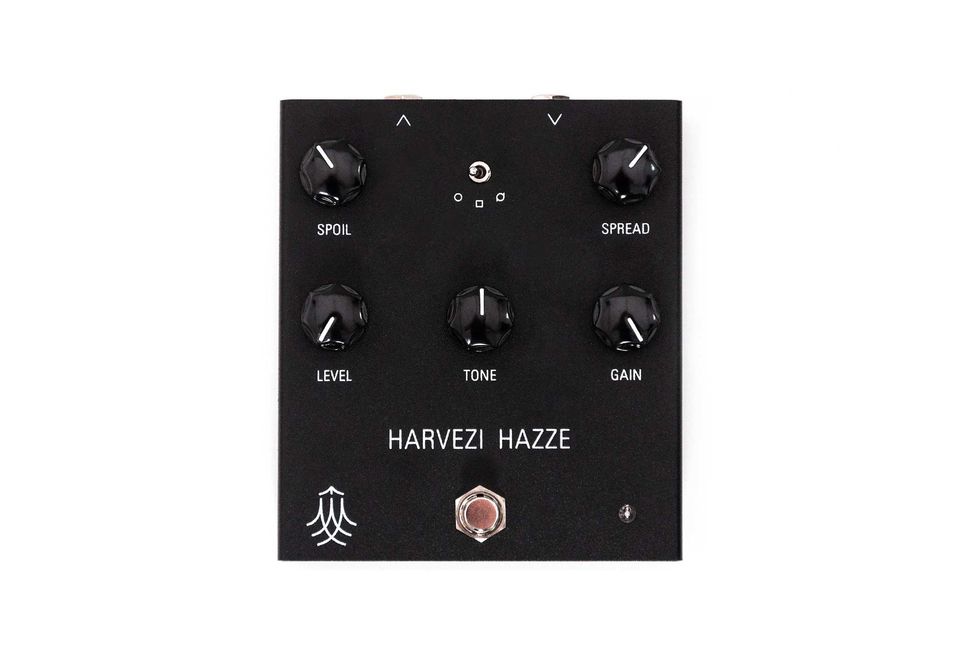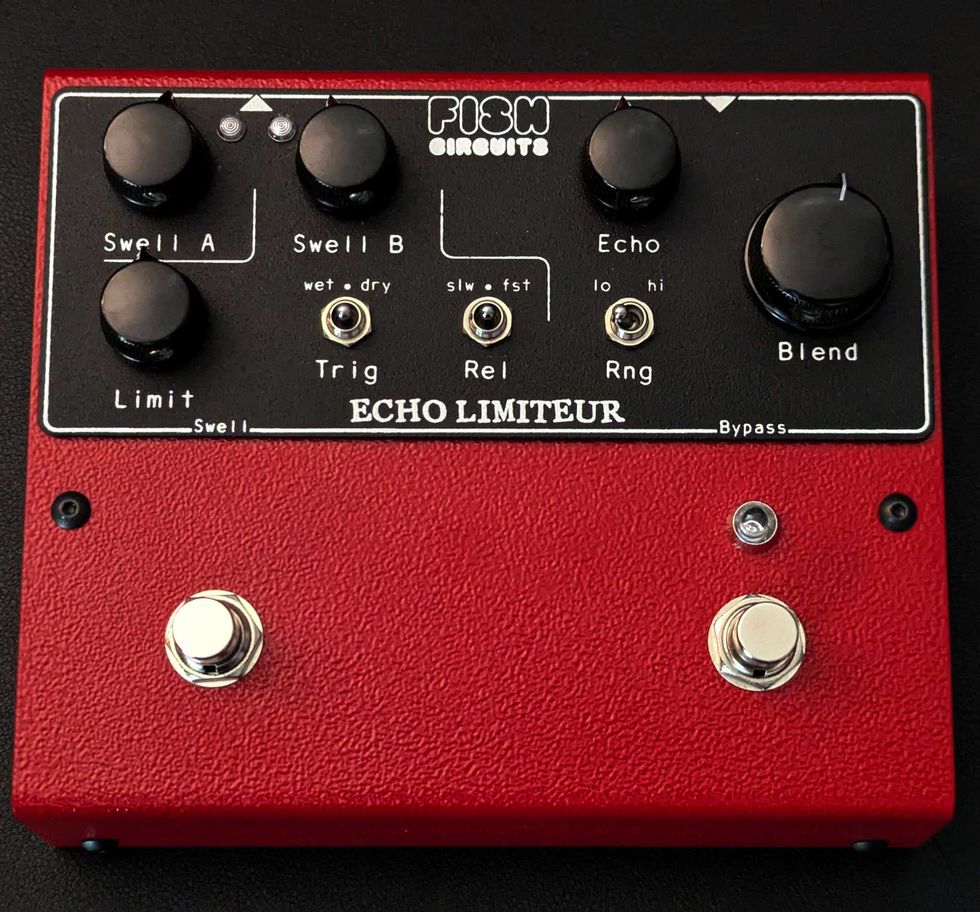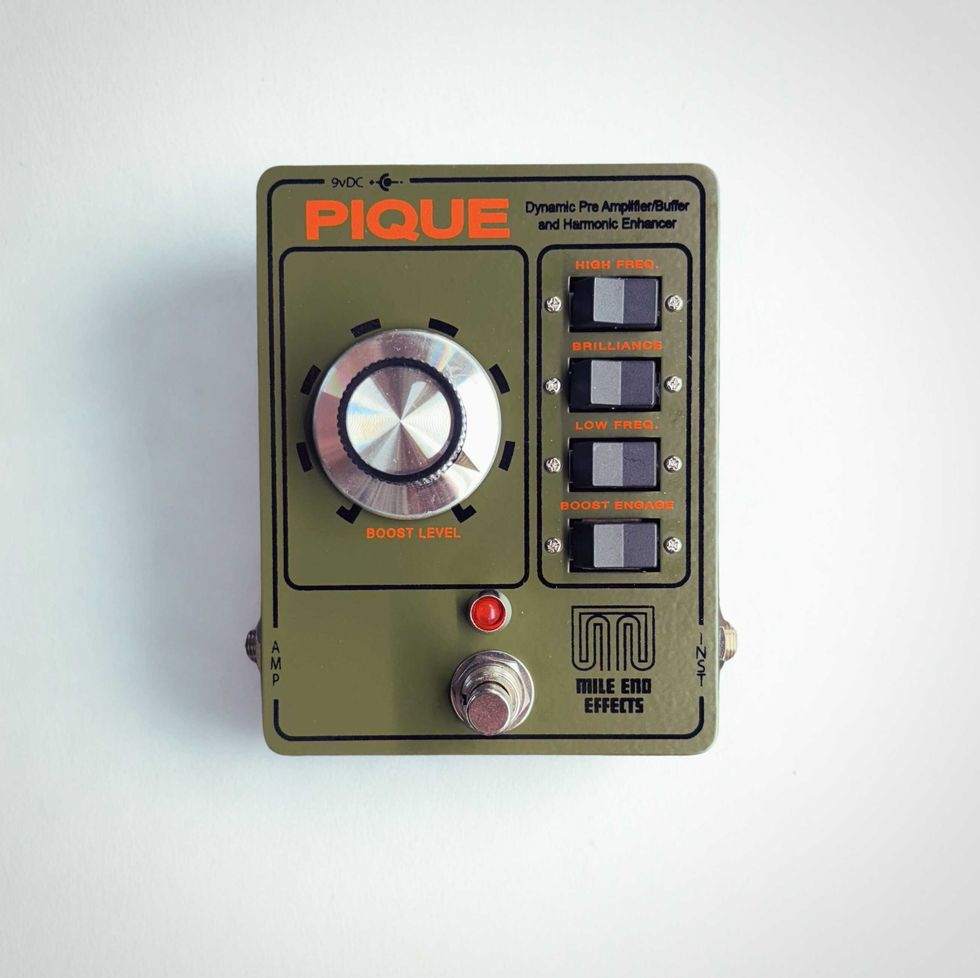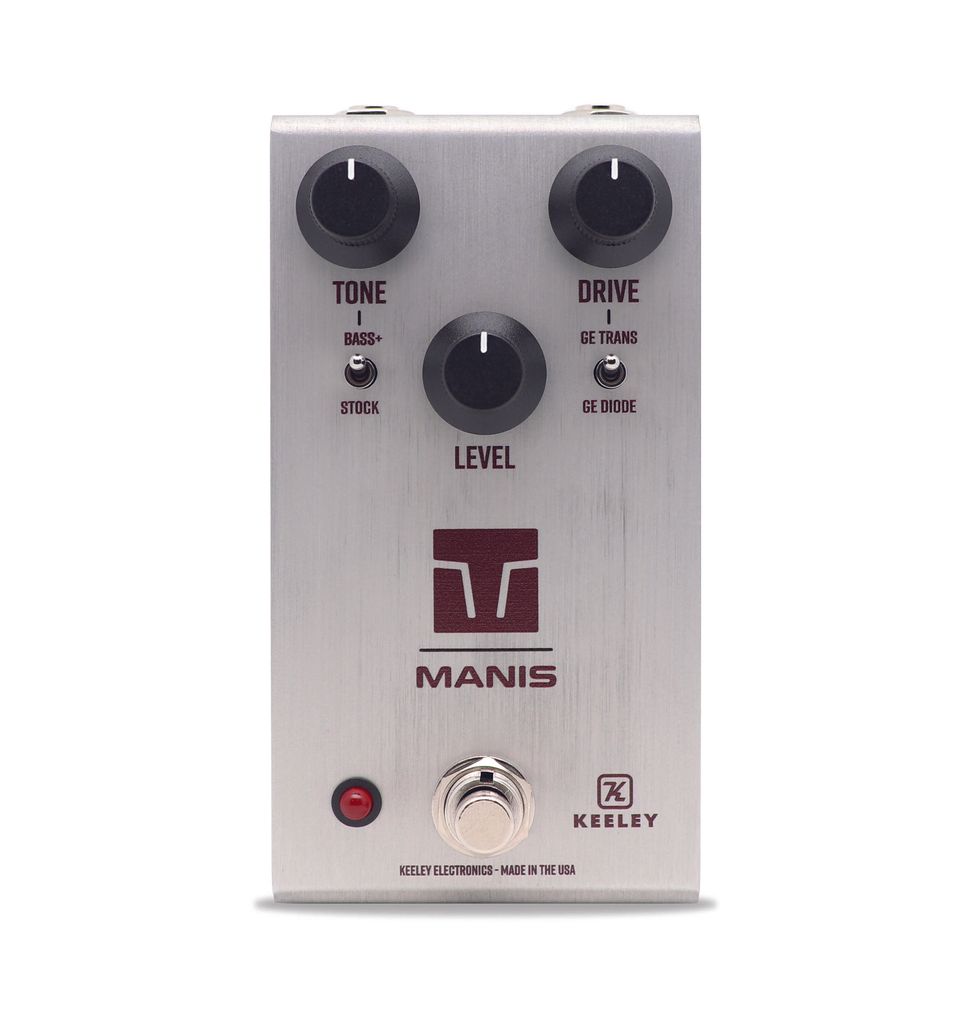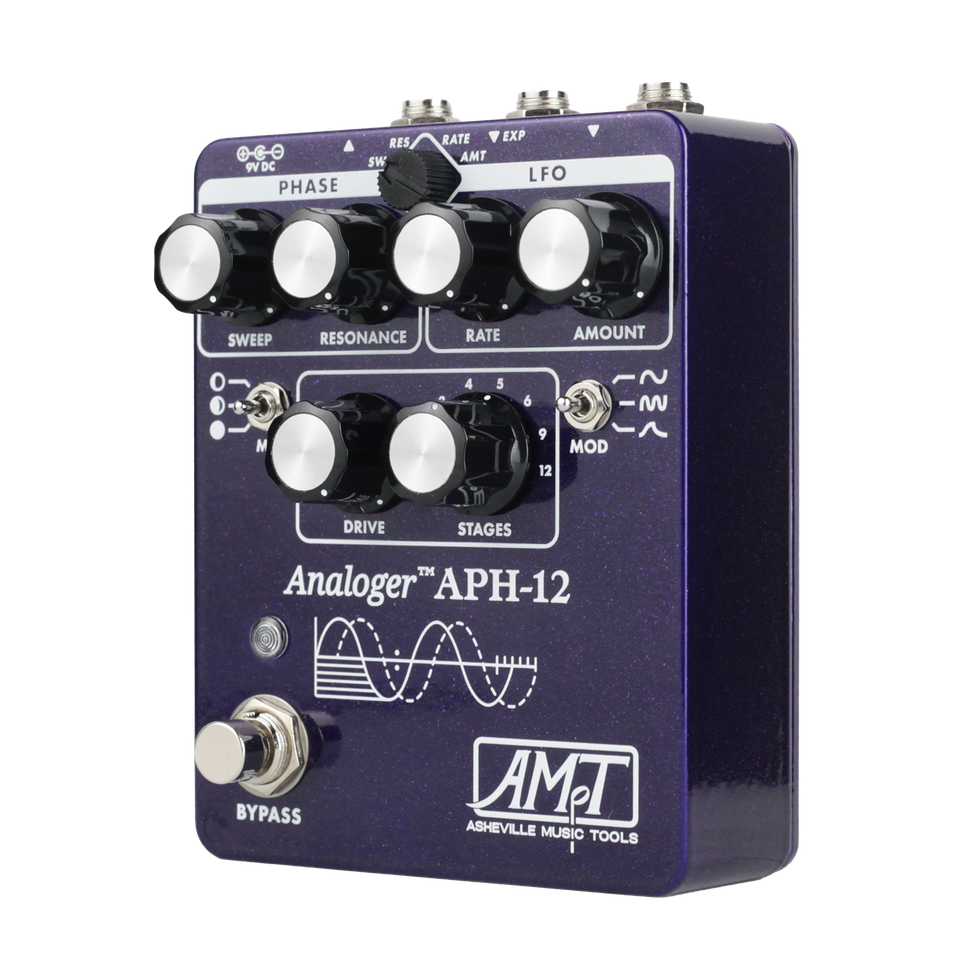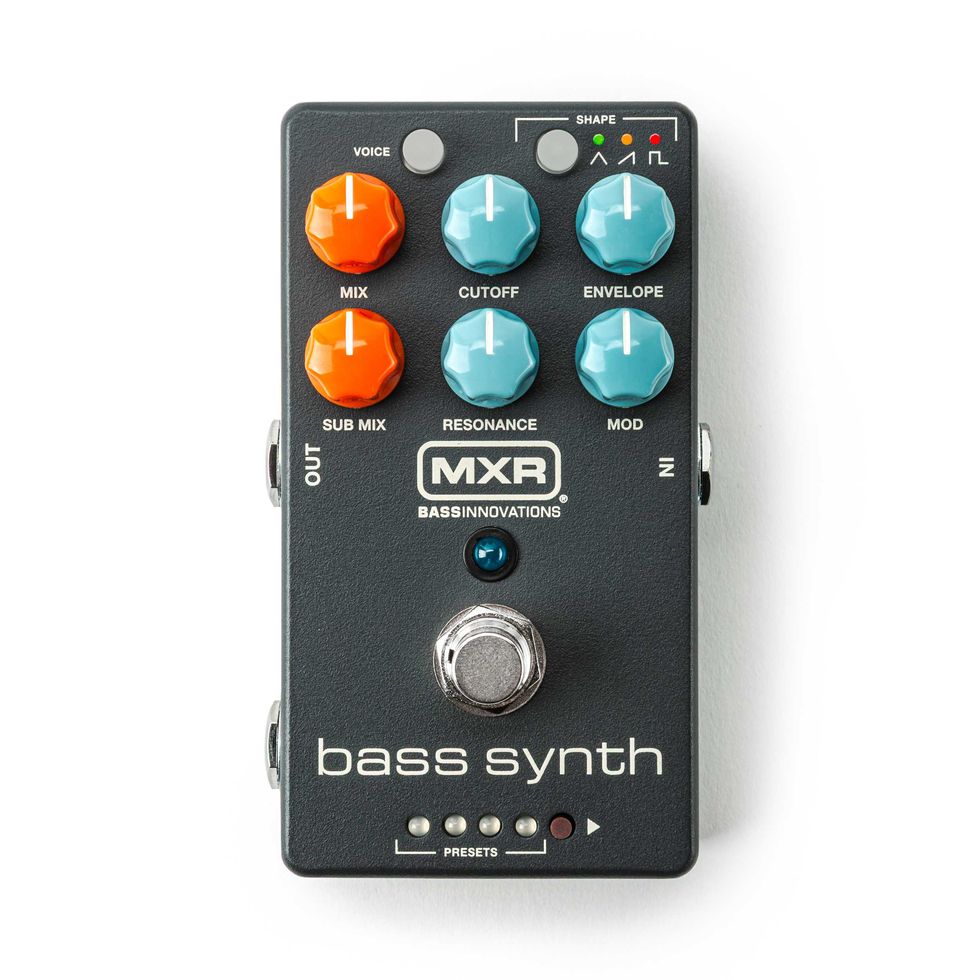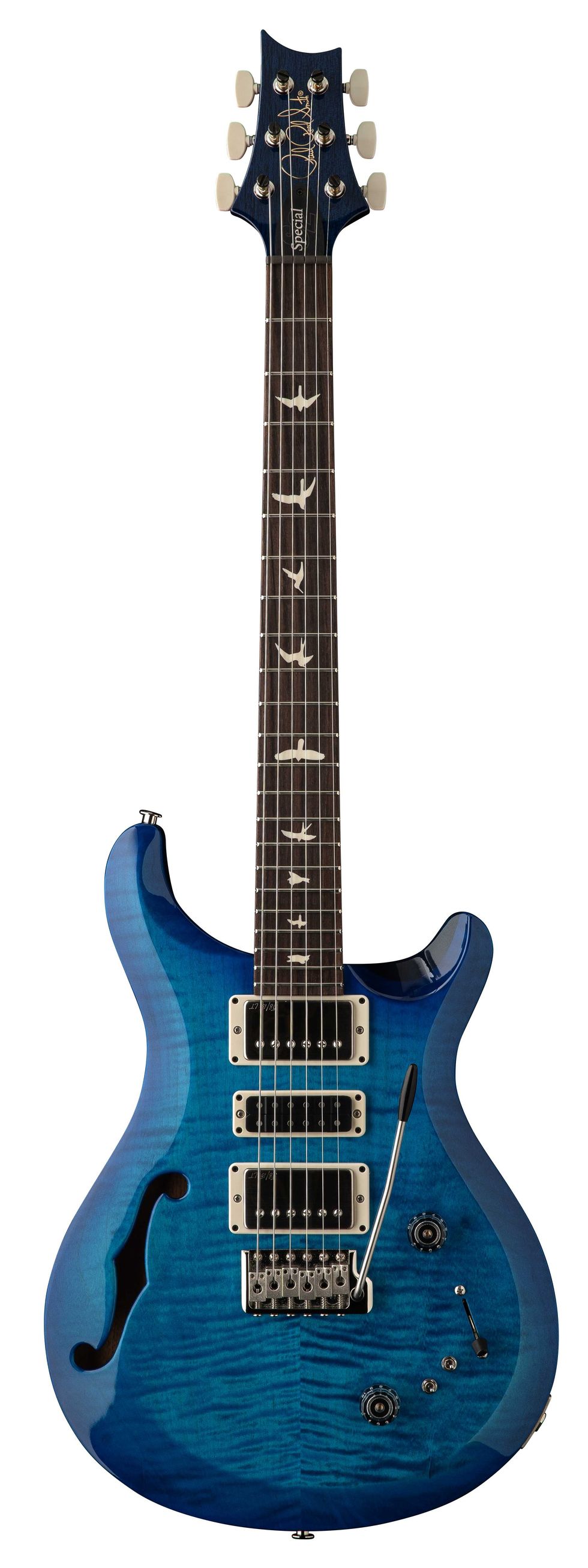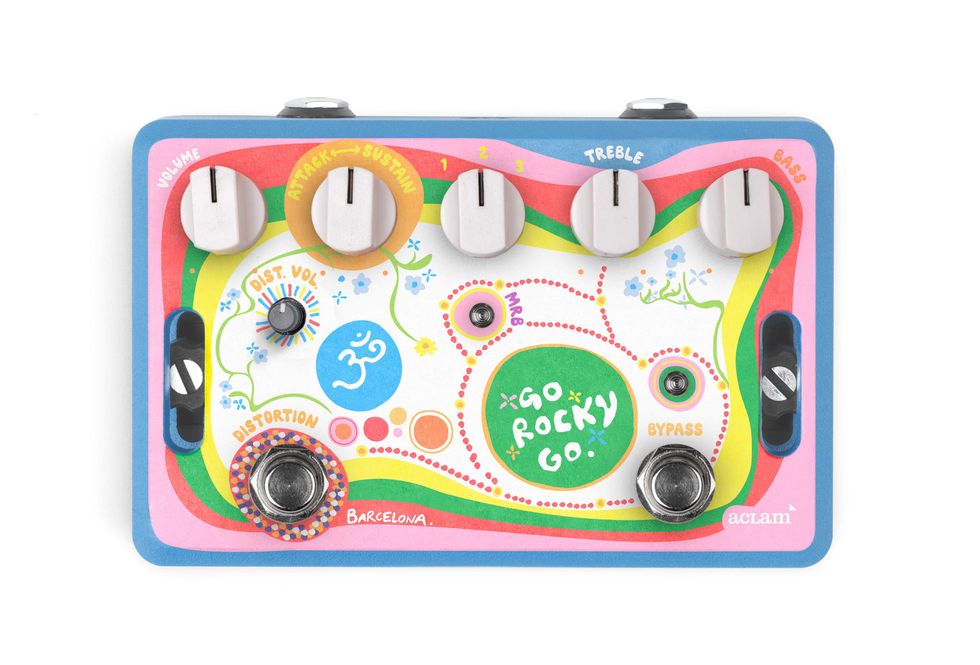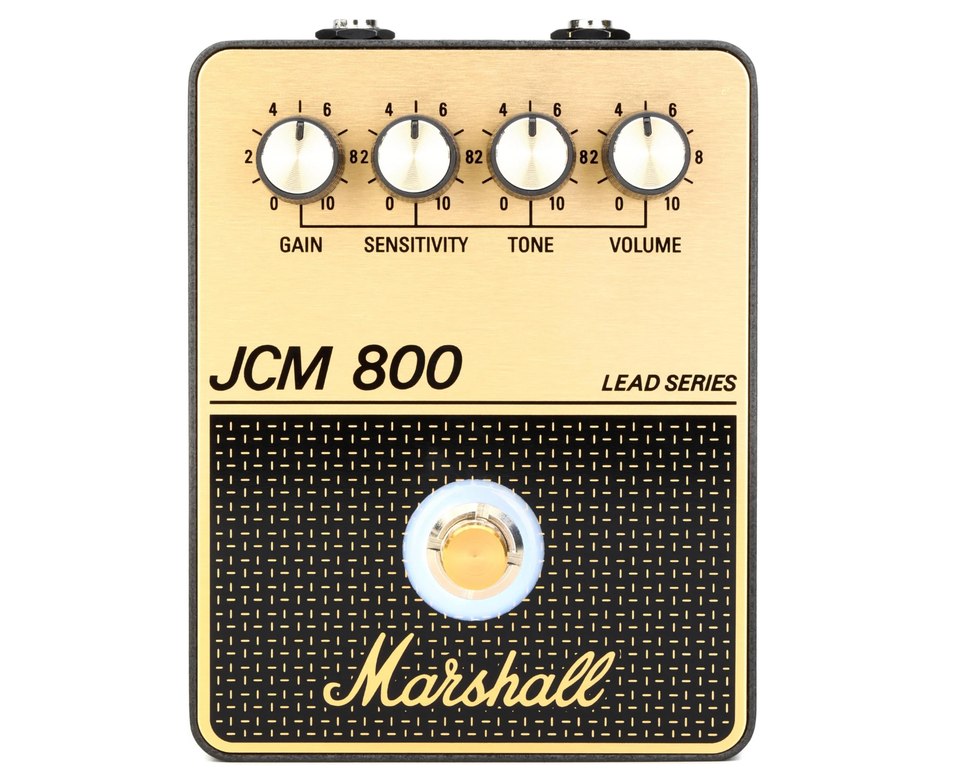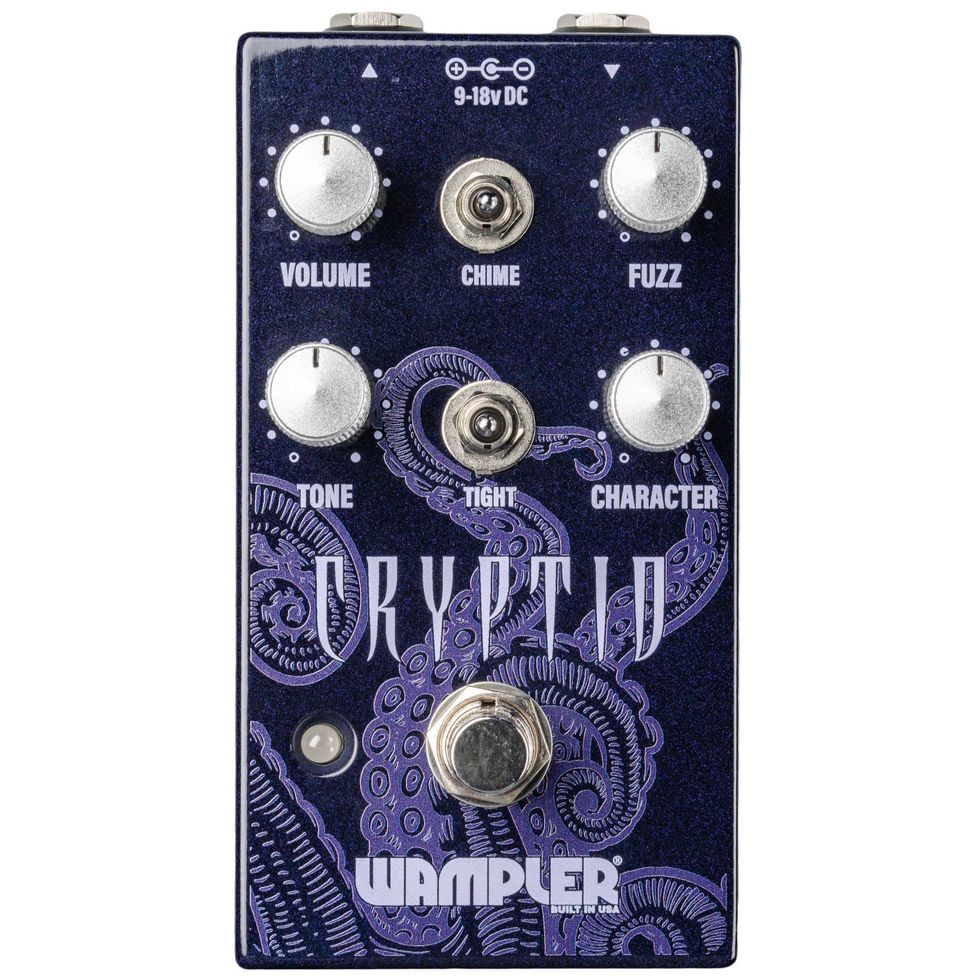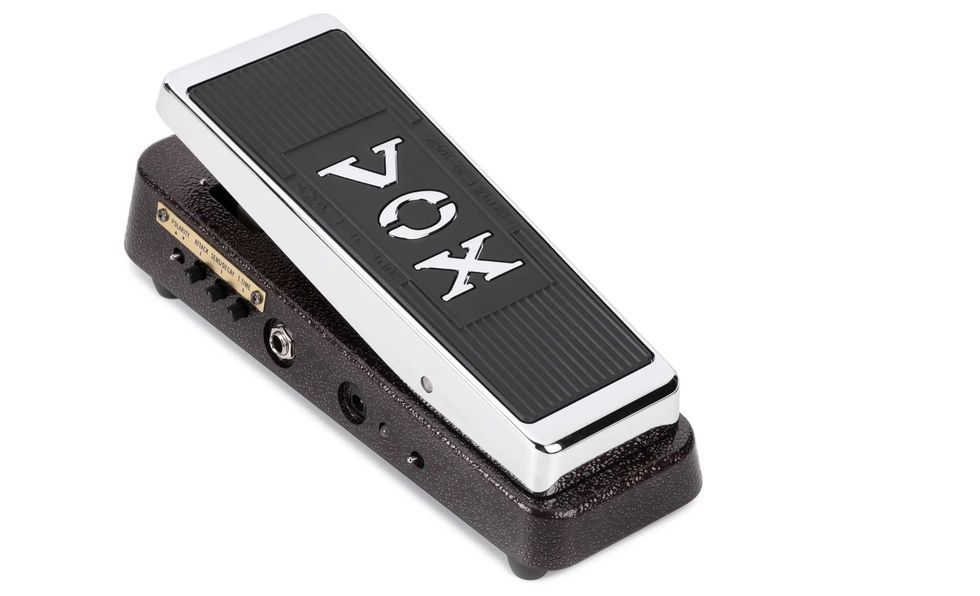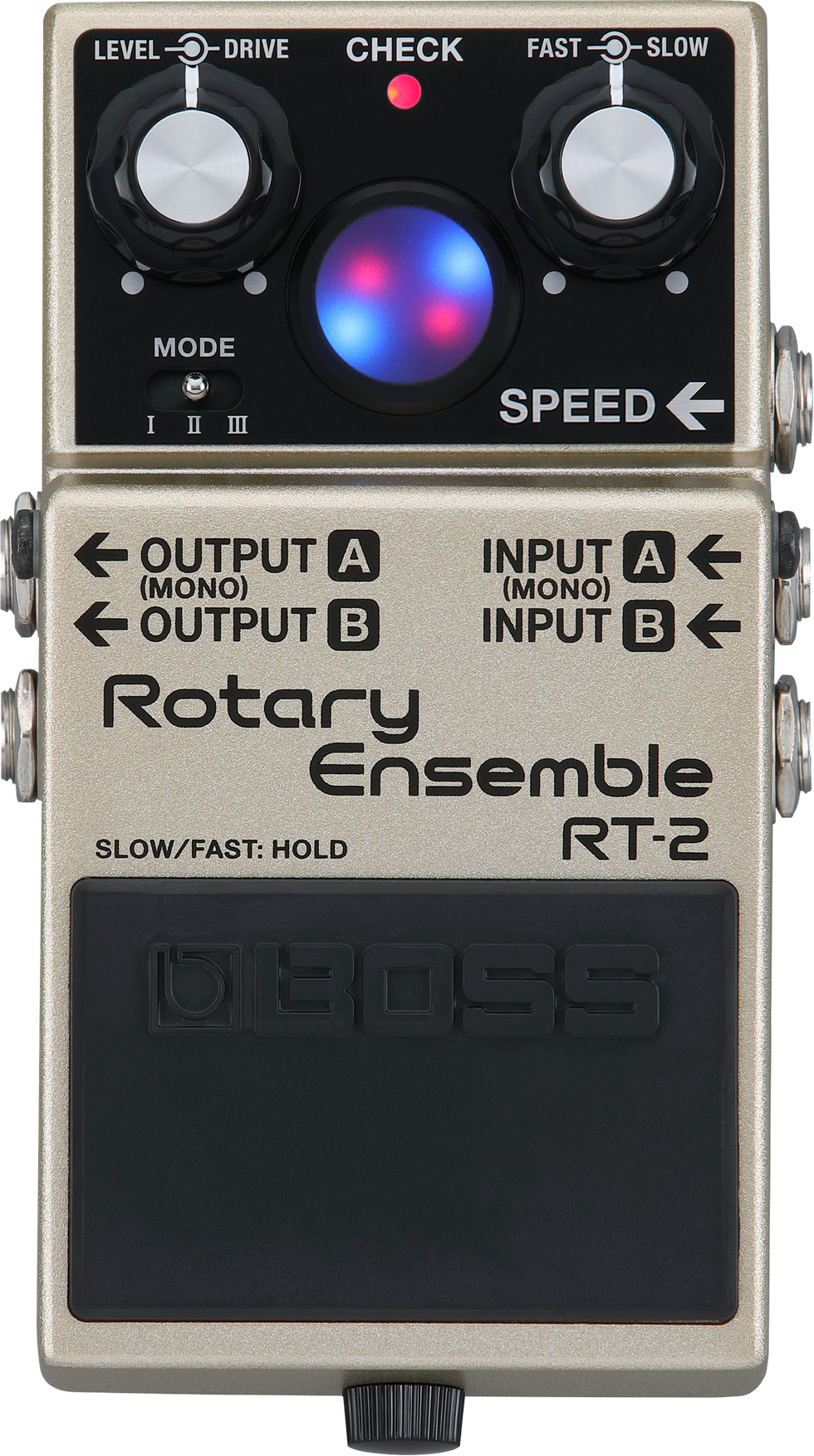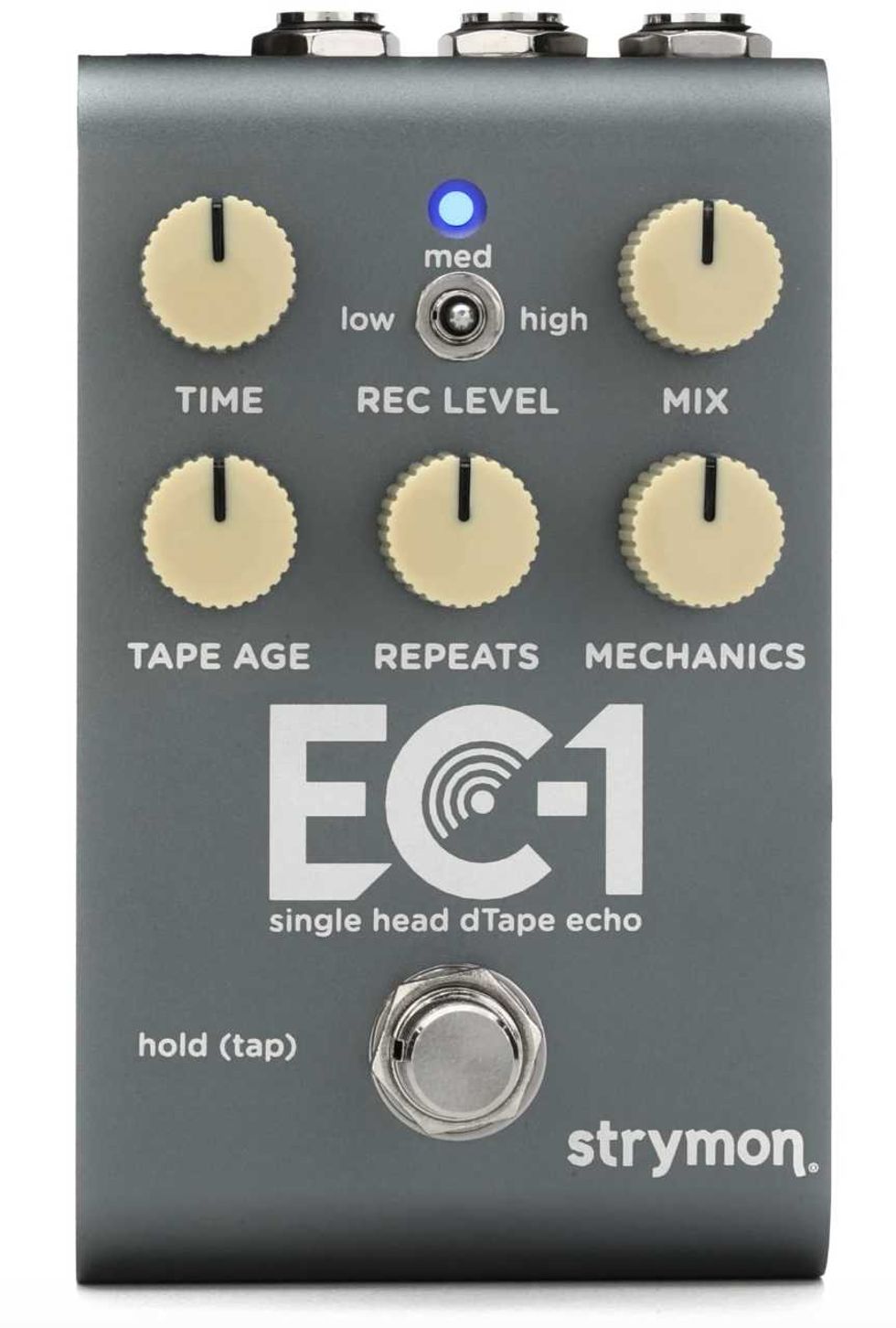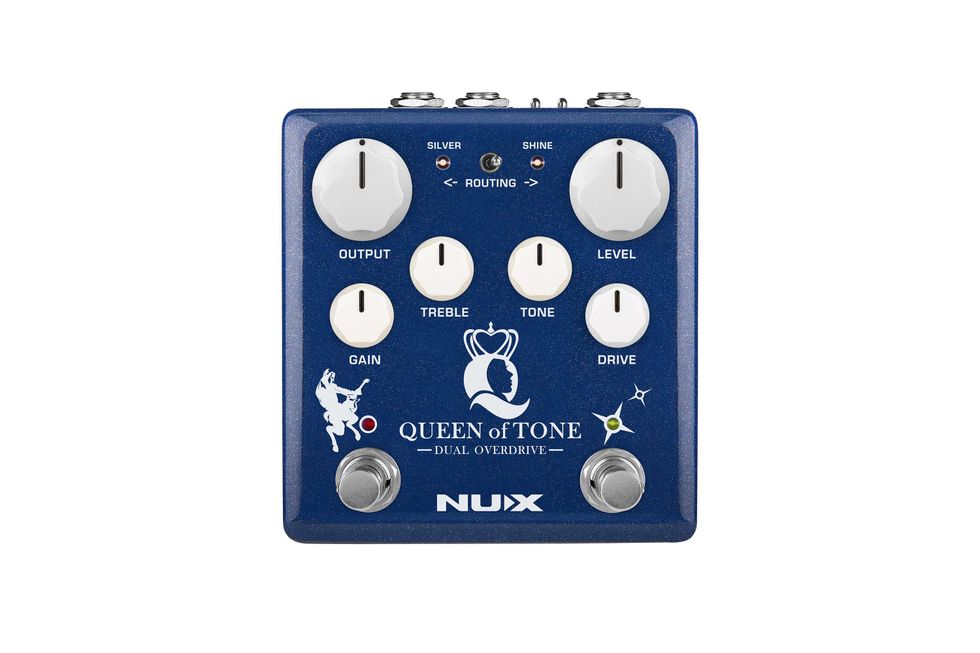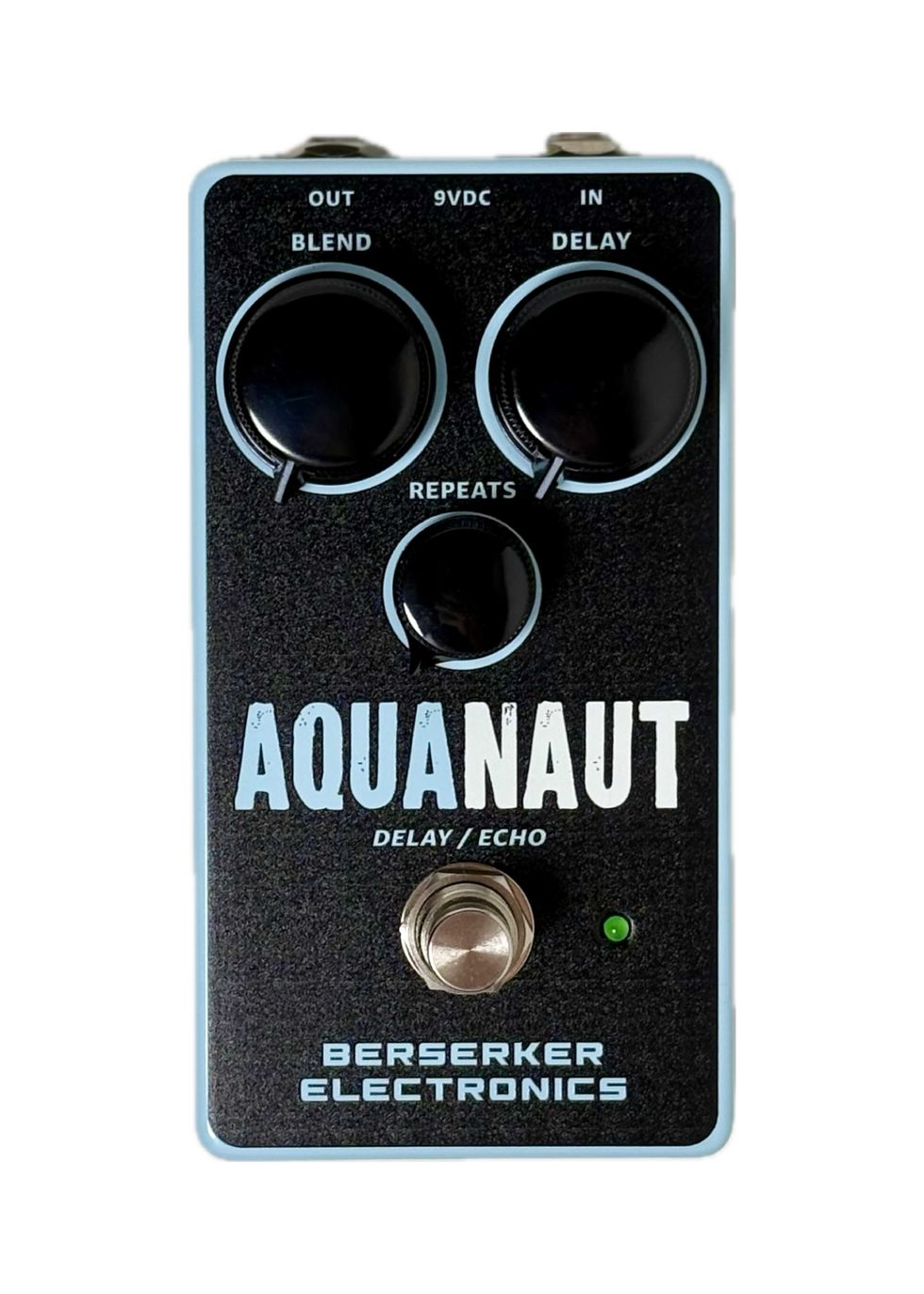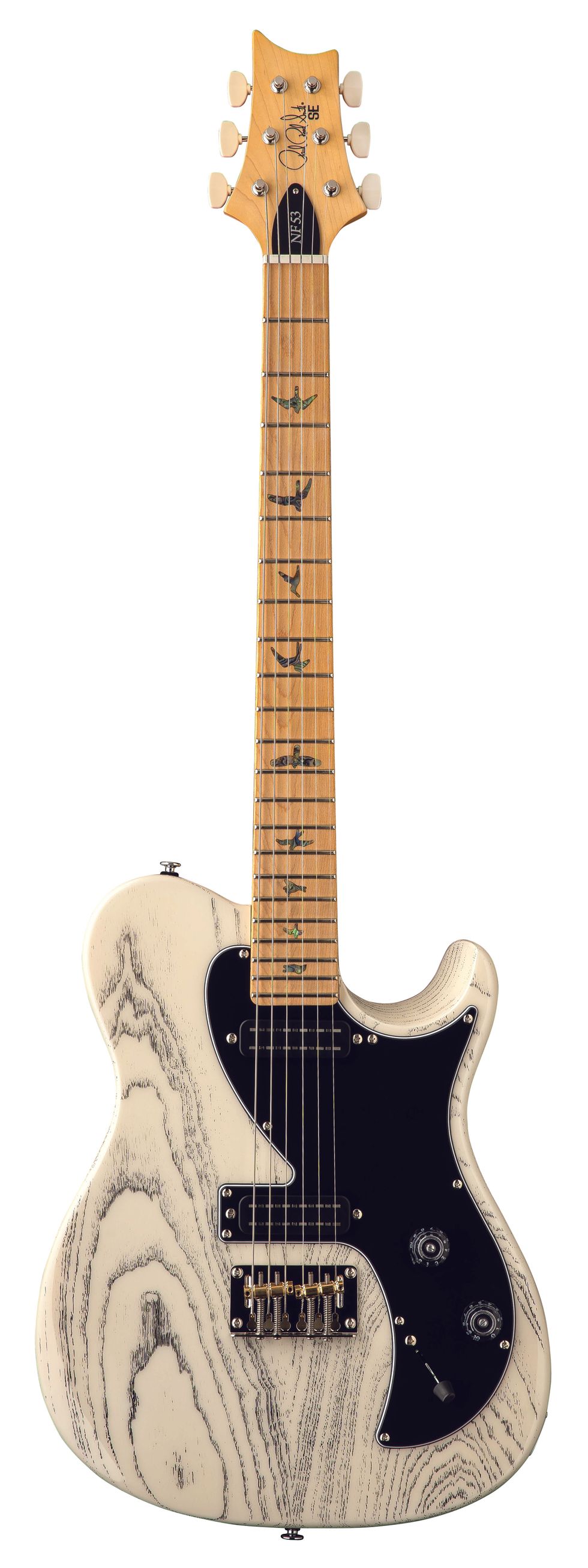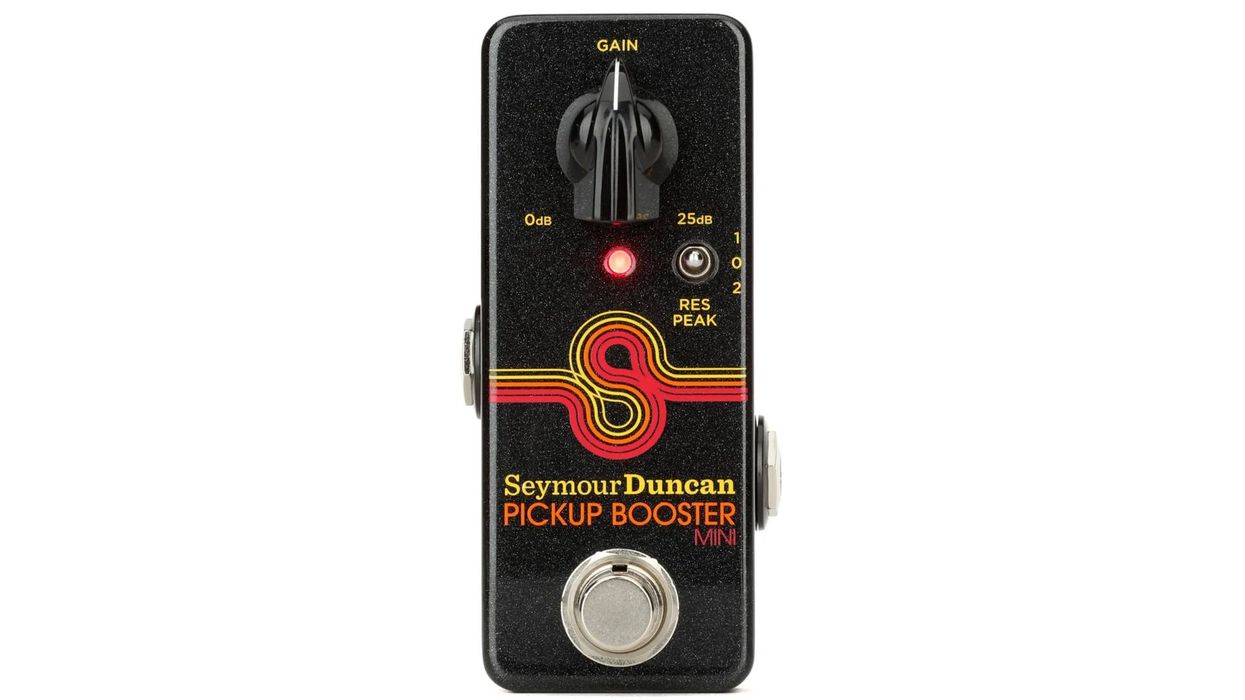Jeff,
In the June issue “Axes Bold As Love” article, there are two photos of Jonny Lang’s Deluxe Reverbs. The caption states, “He plugged into both the Normal and Vibrato channels simultaneously for extra thickness and texture.” Indeed, the photos show four guitar cords, connected to the “1” inputs of both channels on both amps.
However, the common wisdom concerning Fender amps with vibrato is that jumpering the channels doesn’t work. Unlike a four-input Marshall or a Bassman, a Fender amp equipped with vibrato has an extra triode amplification stage in the vibrato channel— the normal channel has two stages, but the vibrato channel has three. Since each stage inverts the signal, the signals from the two channels are out-of-phase when they arrive at the phase inverter. Combining out-of-phase signals like this should result in a thinned-out, weaker sound—pretty much the opposite of “extra thickness and texture.”
So what gives? Is there something special about Lang’s amps? Is he perhaps using some sort of external splitter that provides an intentional phase reversal for two of the four channels? Or is Jonny just a weirdo who happens to like a thin, nasal guitar sound?
Rich Stevens
Potsdam, New York
Hi Rich,
Nice catch and great question. While I don’t believe that Jonny is a big fan of “thin, nasal guitar,” you are correct in why this shouldn’t work. (Nice technical explanation too. Boy, I’d better watch my job!) First, I’ll tell you exactly what’s going on in Jonny’s rig and then give you a couple of cool alternatives.
In the picture of Jonny’s rig that you’re referring to, you do see cables connected to input 1 of both amp channels, but he only uses one channel at a time. Not shown are the other ends of those same cables connected to an A/B switcher. If you look closely, you’ll see that the channels are set differently. He uses the amp’s Vibrato channel for his rhythm sound and switches to the Normal channel for his solo tones. Using the amp this way, the phase of one channel is not affected by the phase of the other because the signal is not passing through both channels simultaneously.
Mystery solved. Now let’s get to a couple of cool alternatives that will indeed allow you to use both channels simultaneously. The first method is a simple modification that will place both channels in phase with each other, as well as enable both channels to have reverb and tremolo. Although I’m sure there are a few variations on this type of modification, this is a very simple version. I’ve done this on many original black and silverface models over the years. Doing this modification on the current reissue models may be a bit more challenging due to the use of circuit boards, but it’s nothing that a good, experienced tech shouldn’t be able to handle. And we all know that a good, experienced tech should always be the person executing any amplifier modification because of the risk of life-threatening injury! Fender would also like to remind readers that modifying an amp’s circuitry will void the warranty, and that repairs should only be performed by an authorized technician.
Locate the capacitor that is the output of the second gain stage in the Normal channel. This would normally be a .047uf capacitor and on the schematic of the reissue Deluxe Reverb (available for download in the online version of this article at premierguitar.com), it is noted as C5. In the original black and silver versions of the amp, this cap was connected to a 220k resistor via a long wire. Remove the wire connection from the 220k resistor. Now locate the capacitor that is the output of the second gain stage in the Vibrato channel— typically a .022uf capacitor. On the reissue’s schematic it is listed as C12. This capacitor is connected to the junction of a 10pf capacitor and a 3.9Mohm resistor, as well as a 500pf capacitor (C13, R25, and C14, respectively). Connect the wire from the output of the Normal channel capacitor to this junction.
That’s it! You have now sent the output of the Normal channel to the input of the reverb and tremolo circuits along with the Vibrato channel. Of course, all modifications to an amplifier will change some aspect of it, and this is no exception. This one may change the gain structure and feel of the amp a bit, but I’m sure it’s nothing you couldn’t quickly become comfortable with. Once this is done, you will be able to run the guitar into both channels simultaneously, each with different EQ settings. This will also give you the option of using two different guitars, one connected to each channel. This will enable each guitar to have reverb and tremolo, as well as having its own channel volume and tone controls.
Another option is to use an external device that would supply you with two output signals, one of which would be 180 degrees out-of-phase with the other. This would allow you to simultaneously use both channels of any black or silverface amp you might run into. One such device is the Barber Electronics Launch Pad. This device not only gives you two phase-reversible outputs, but also a variable 20 dB of gain for when you need to really push those amps over the top.
There you have your two channels demystified and reenergized!
Jeff Bober
Jeff Bober, one of the godfathers of the low-wattage amp revolution, co-founded and was the principal designer for Budda Amplification. Jeff has just launched EAST Amplification. He can be reached at pgampman@gmail.com.
In the June issue “Axes Bold As Love” article, there are two photos of Jonny Lang’s Deluxe Reverbs. The caption states, “He plugged into both the Normal and Vibrato channels simultaneously for extra thickness and texture.” Indeed, the photos show four guitar cords, connected to the “1” inputs of both channels on both amps.
However, the common wisdom concerning Fender amps with vibrato is that jumpering the channels doesn’t work. Unlike a four-input Marshall or a Bassman, a Fender amp equipped with vibrato has an extra triode amplification stage in the vibrato channel— the normal channel has two stages, but the vibrato channel has three. Since each stage inverts the signal, the signals from the two channels are out-of-phase when they arrive at the phase inverter. Combining out-of-phase signals like this should result in a thinned-out, weaker sound—pretty much the opposite of “extra thickness and texture.”
So what gives? Is there something special about Lang’s amps? Is he perhaps using some sort of external splitter that provides an intentional phase reversal for two of the four channels? Or is Jonny just a weirdo who happens to like a thin, nasal guitar sound?
Rich Stevens
Potsdam, New York
Hi Rich,
Nice catch and great question. While I don’t believe that Jonny is a big fan of “thin, nasal guitar,” you are correct in why this shouldn’t work. (Nice technical explanation too. Boy, I’d better watch my job!) First, I’ll tell you exactly what’s going on in Jonny’s rig and then give you a couple of cool alternatives.
In the picture of Jonny’s rig that you’re referring to, you do see cables connected to input 1 of both amp channels, but he only uses one channel at a time. Not shown are the other ends of those same cables connected to an A/B switcher. If you look closely, you’ll see that the channels are set differently. He uses the amp’s Vibrato channel for his rhythm sound and switches to the Normal channel for his solo tones. Using the amp this way, the phase of one channel is not affected by the phase of the other because the signal is not passing through both channels simultaneously.
Mystery solved. Now let’s get to a couple of cool alternatives that will indeed allow you to use both channels simultaneously. The first method is a simple modification that will place both channels in phase with each other, as well as enable both channels to have reverb and tremolo. Although I’m sure there are a few variations on this type of modification, this is a very simple version. I’ve done this on many original black and silverface models over the years. Doing this modification on the current reissue models may be a bit more challenging due to the use of circuit boards, but it’s nothing that a good, experienced tech shouldn’t be able to handle. And we all know that a good, experienced tech should always be the person executing any amplifier modification because of the risk of life-threatening injury! Fender would also like to remind readers that modifying an amp’s circuitry will void the warranty, and that repairs should only be performed by an authorized technician.
Locate the capacitor that is the output of the second gain stage in the Normal channel. This would normally be a .047uf capacitor and on the schematic of the reissue Deluxe Reverb (available for download in the online version of this article at premierguitar.com), it is noted as C5. In the original black and silver versions of the amp, this cap was connected to a 220k resistor via a long wire. Remove the wire connection from the 220k resistor. Now locate the capacitor that is the output of the second gain stage in the Vibrato channel— typically a .022uf capacitor. On the reissue’s schematic it is listed as C12. This capacitor is connected to the junction of a 10pf capacitor and a 3.9Mohm resistor, as well as a 500pf capacitor (C13, R25, and C14, respectively). Connect the wire from the output of the Normal channel capacitor to this junction.
That’s it! You have now sent the output of the Normal channel to the input of the reverb and tremolo circuits along with the Vibrato channel. Of course, all modifications to an amplifier will change some aspect of it, and this is no exception. This one may change the gain structure and feel of the amp a bit, but I’m sure it’s nothing you couldn’t quickly become comfortable with. Once this is done, you will be able to run the guitar into both channels simultaneously, each with different EQ settings. This will also give you the option of using two different guitars, one connected to each channel. This will enable each guitar to have reverb and tremolo, as well as having its own channel volume and tone controls.
Another option is to use an external device that would supply you with two output signals, one of which would be 180 degrees out-of-phase with the other. This would allow you to simultaneously use both channels of any black or silverface amp you might run into. One such device is the Barber Electronics Launch Pad. This device not only gives you two phase-reversible outputs, but also a variable 20 dB of gain for when you need to really push those amps over the top.
There you have your two channels demystified and reenergized!
Jeff Bober
Jeff Bober, one of the godfathers of the low-wattage amp revolution, co-founded and was the principal designer for Budda Amplification. Jeff has just launched EAST Amplification. He can be reached at pgampman@gmail.com.

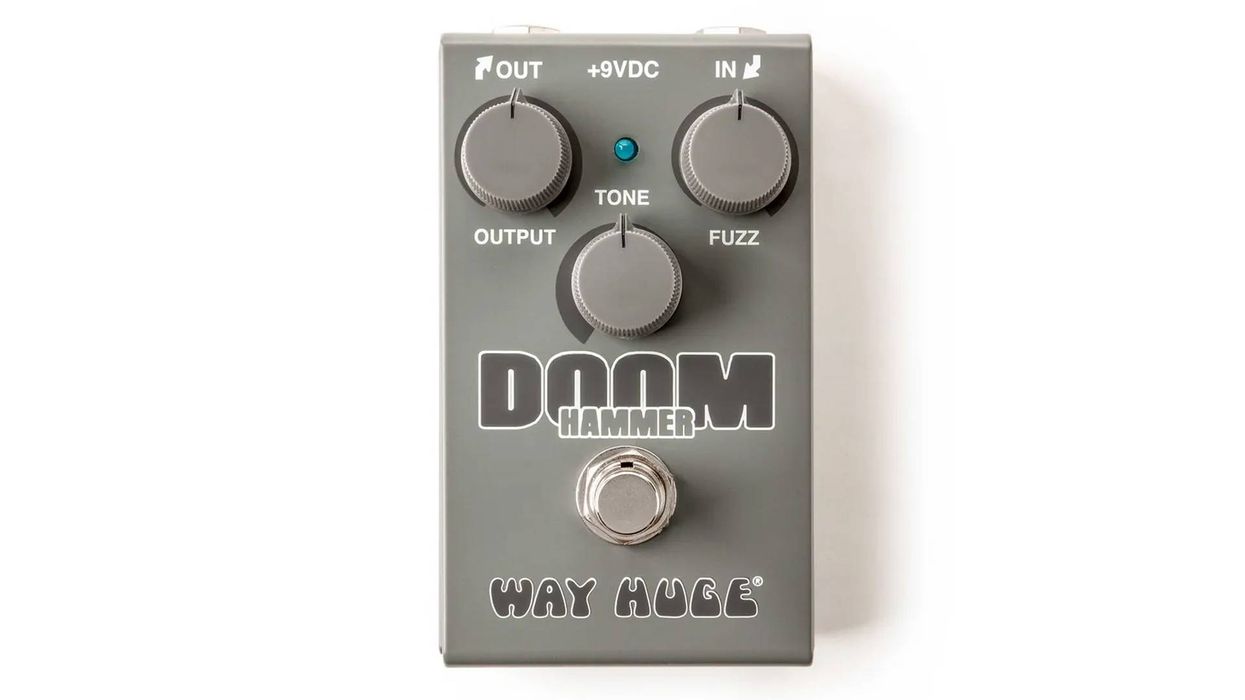
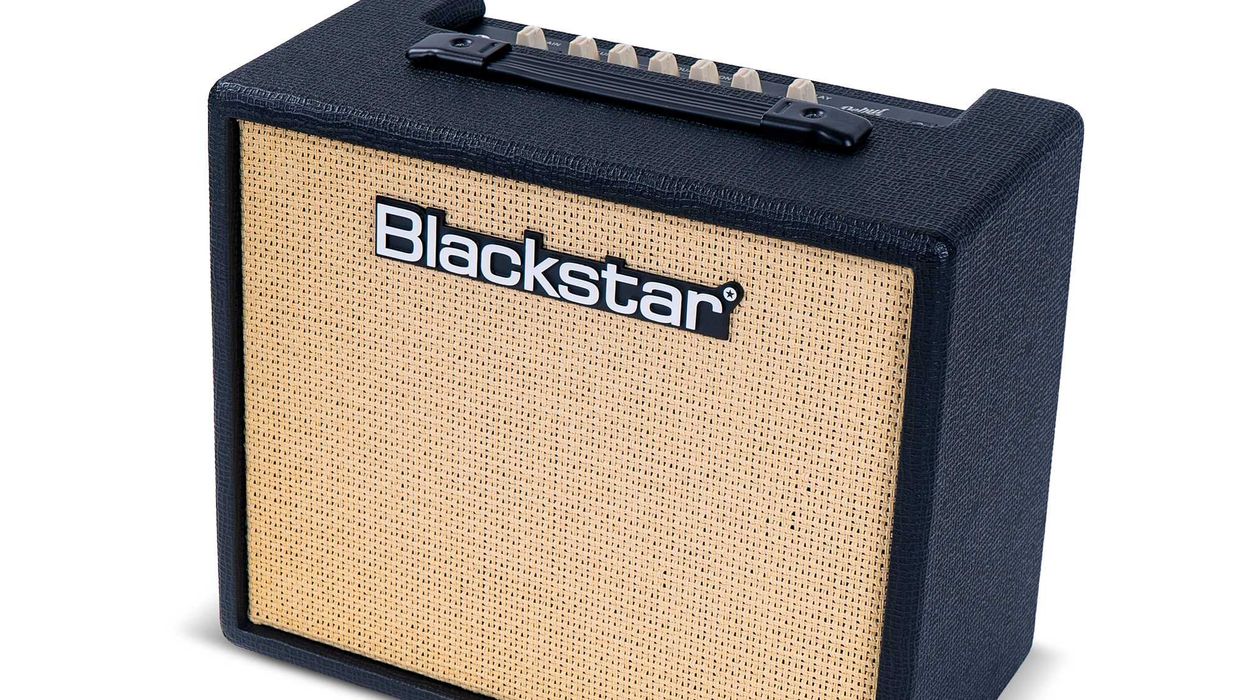
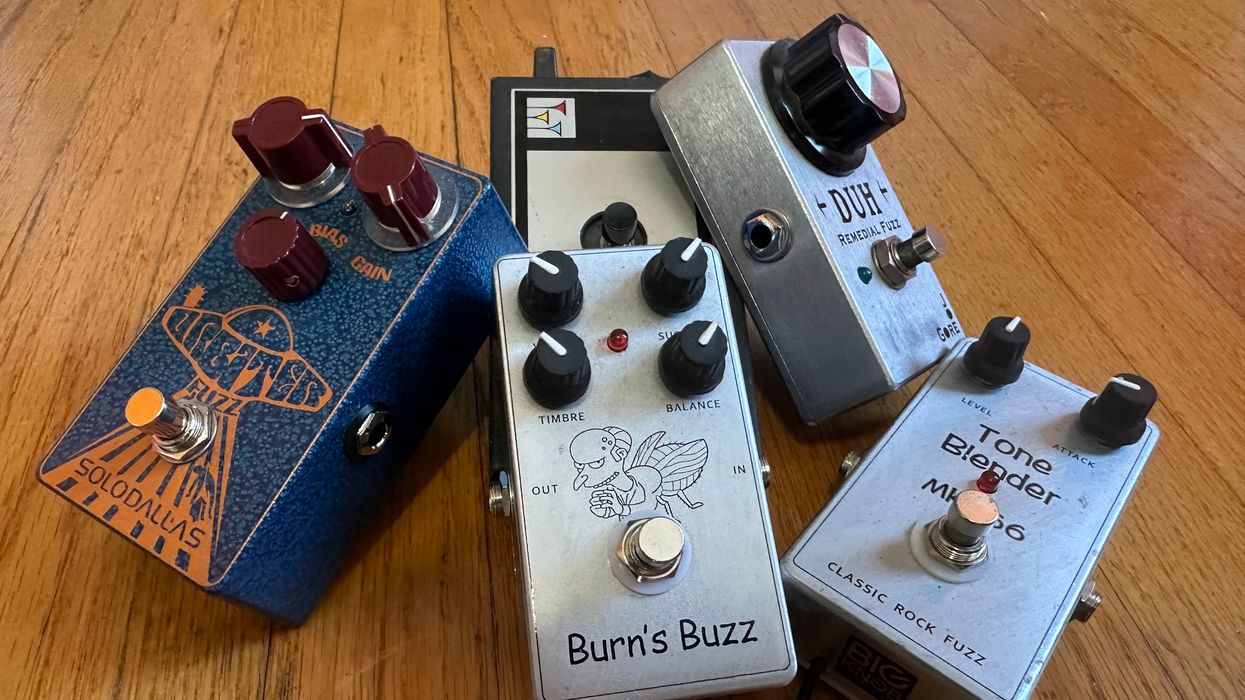

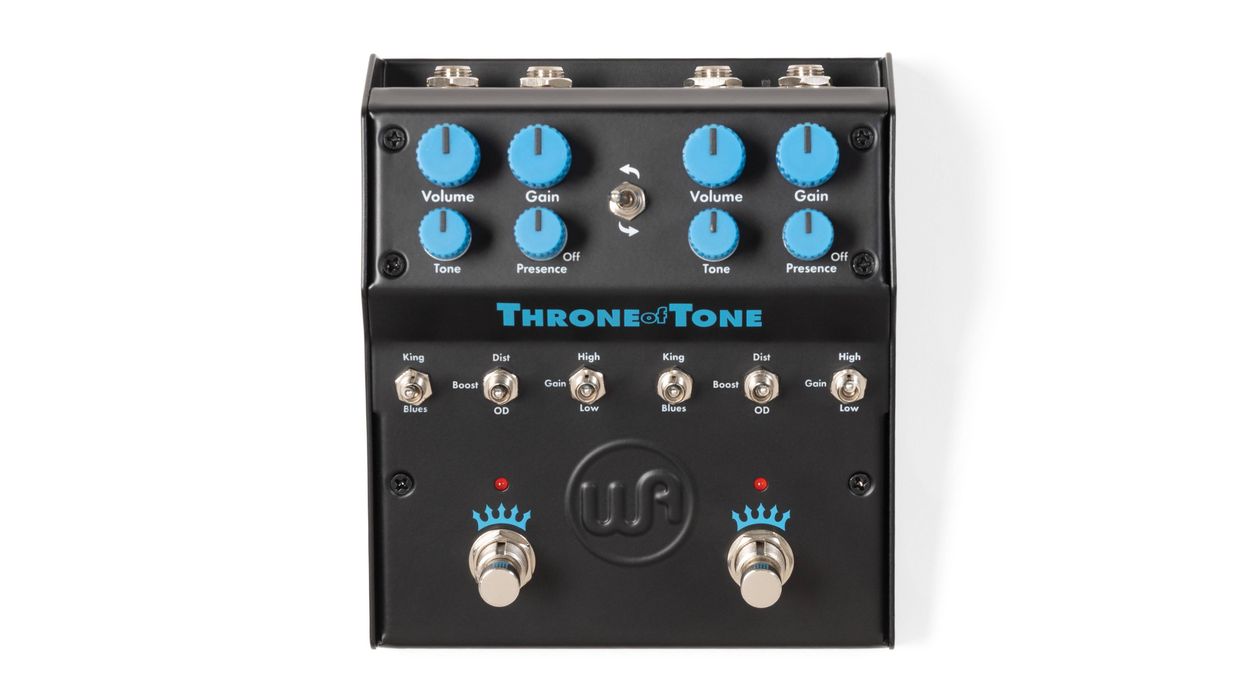
![Rig Rundown: AFI [2025]](https://www.premierguitar.com/media-library/youtube.jpg?id=62064741&width=1245&height=700&quality=70&coordinates=0%2C0%2C0%2C0)
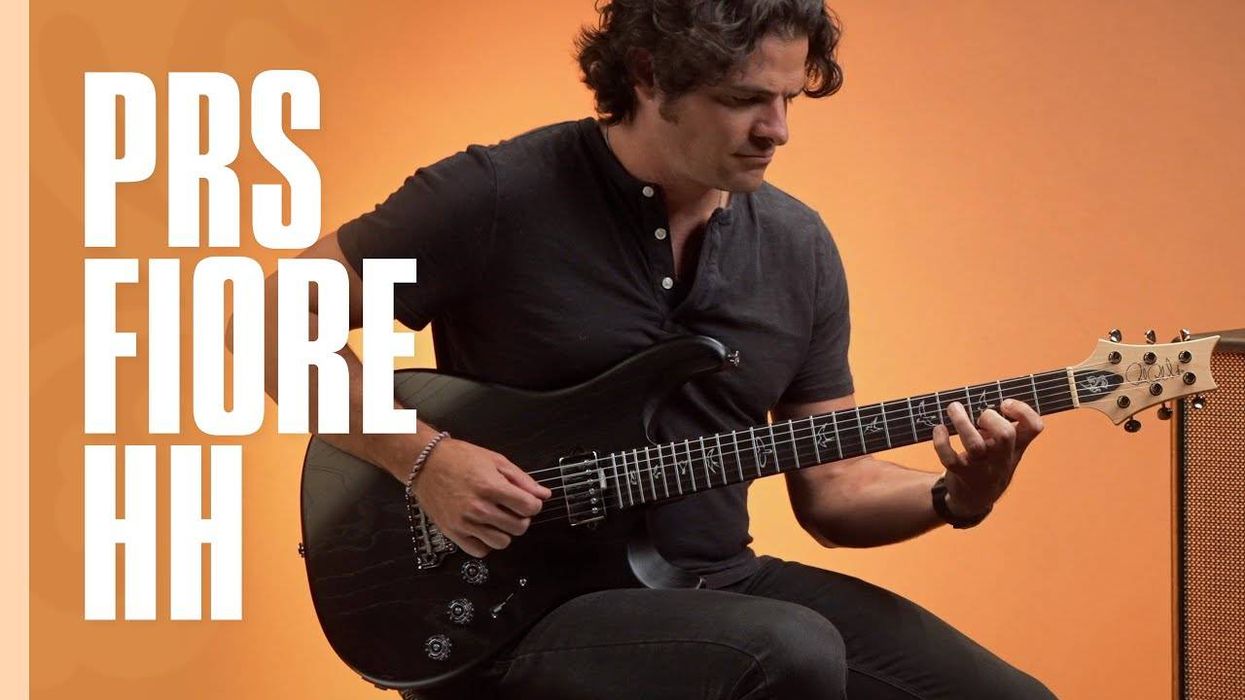
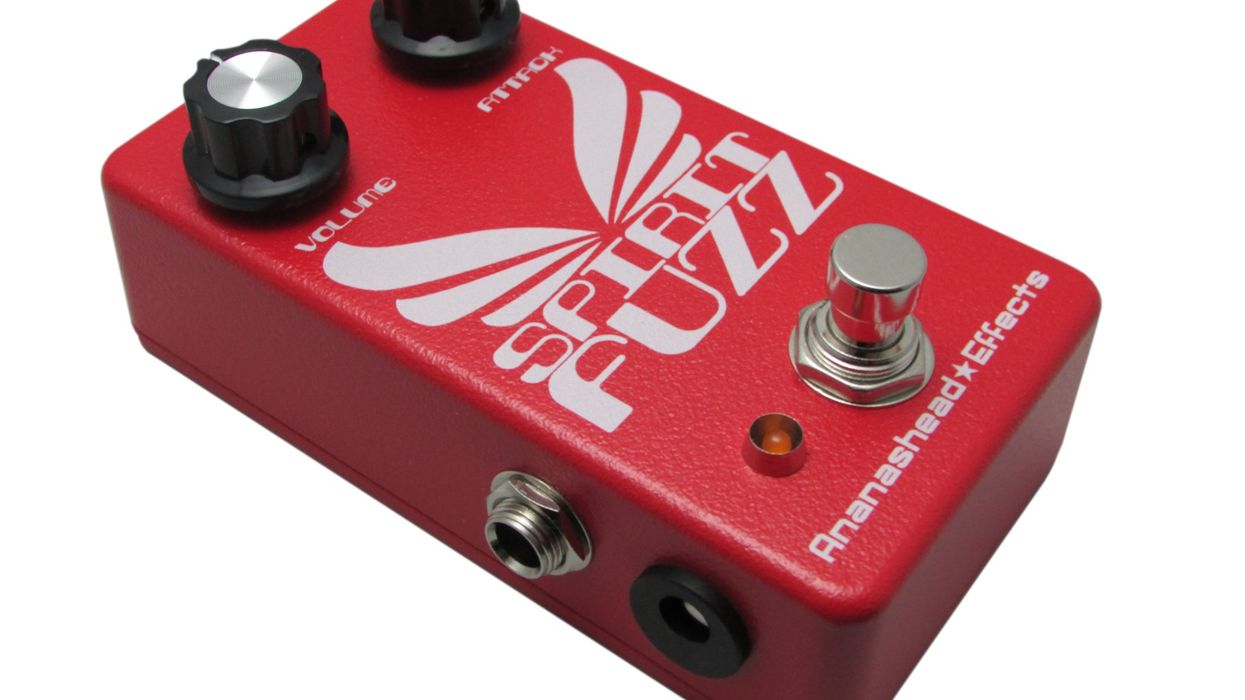
![Devon Eisenbarger [Katy Perry] Rig Rundown](https://www.premierguitar.com/media-library/youtube.jpg?id=61774583&width=1245&height=700&quality=70&coordinates=0%2C0%2C0%2C0)
